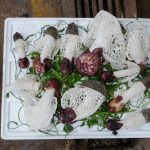Many people’s journeys to Hainan begin and end in Sanya.
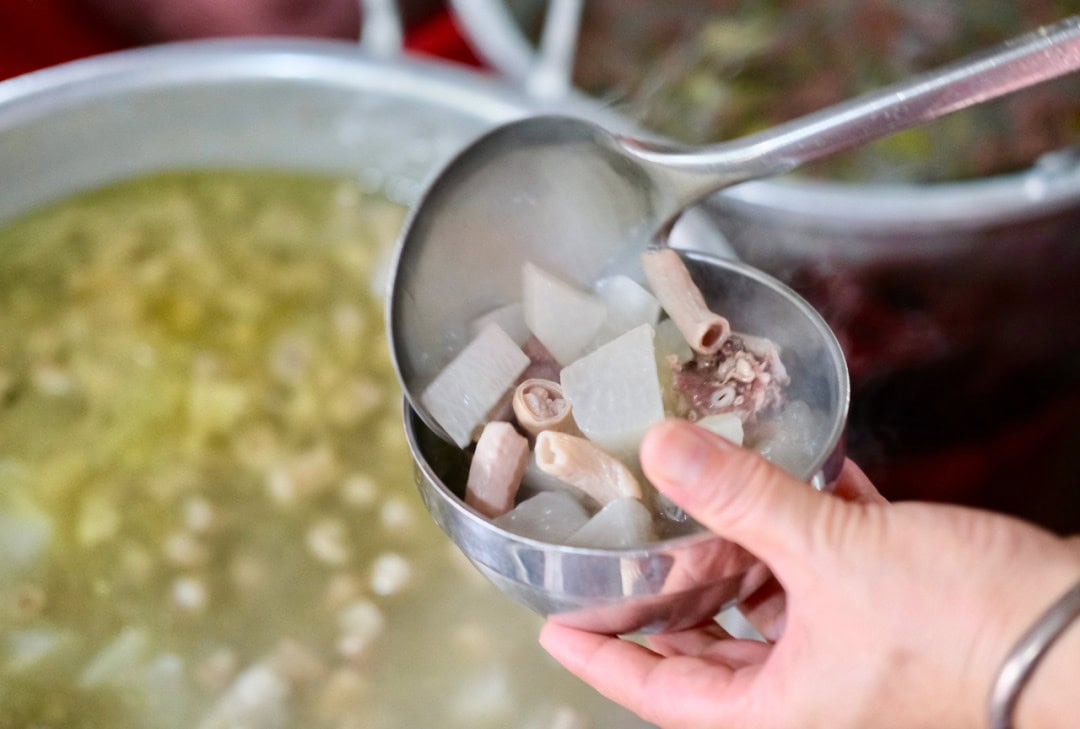
But if you start your exploration in Haikou, you’ll discover a different side of Hainan.
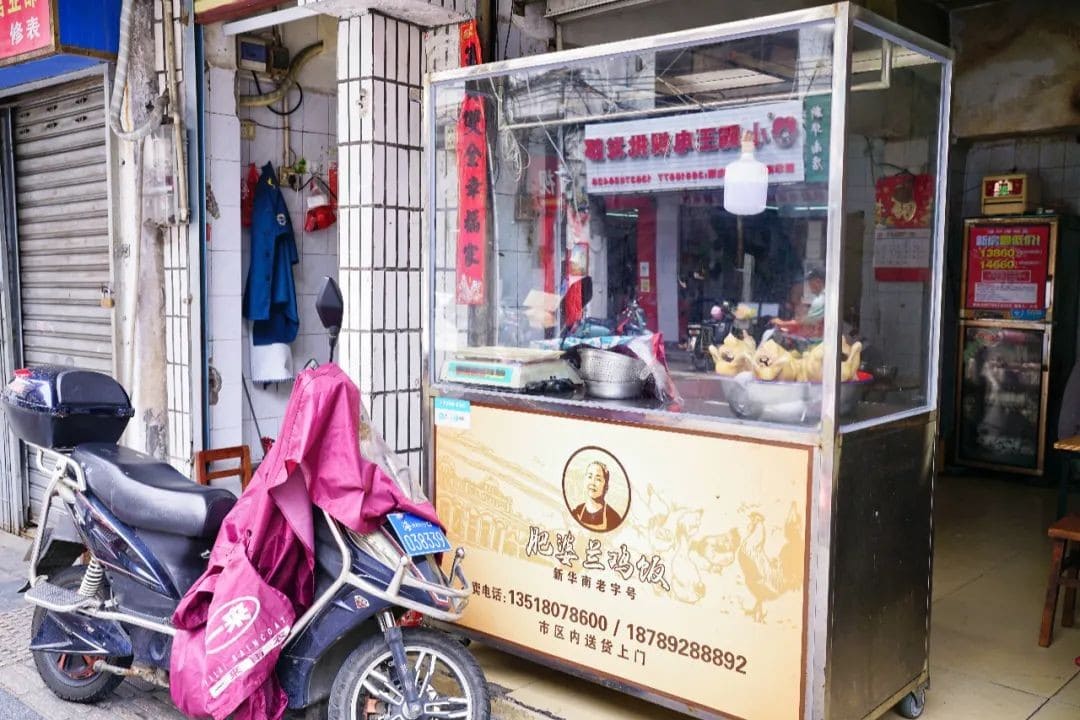
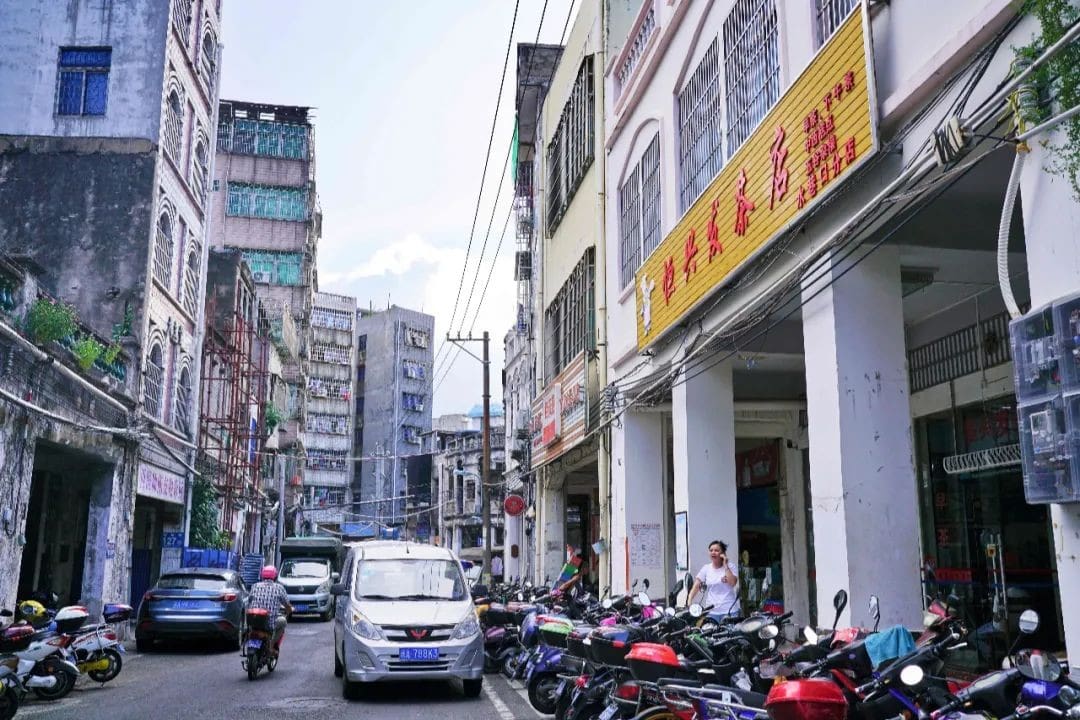
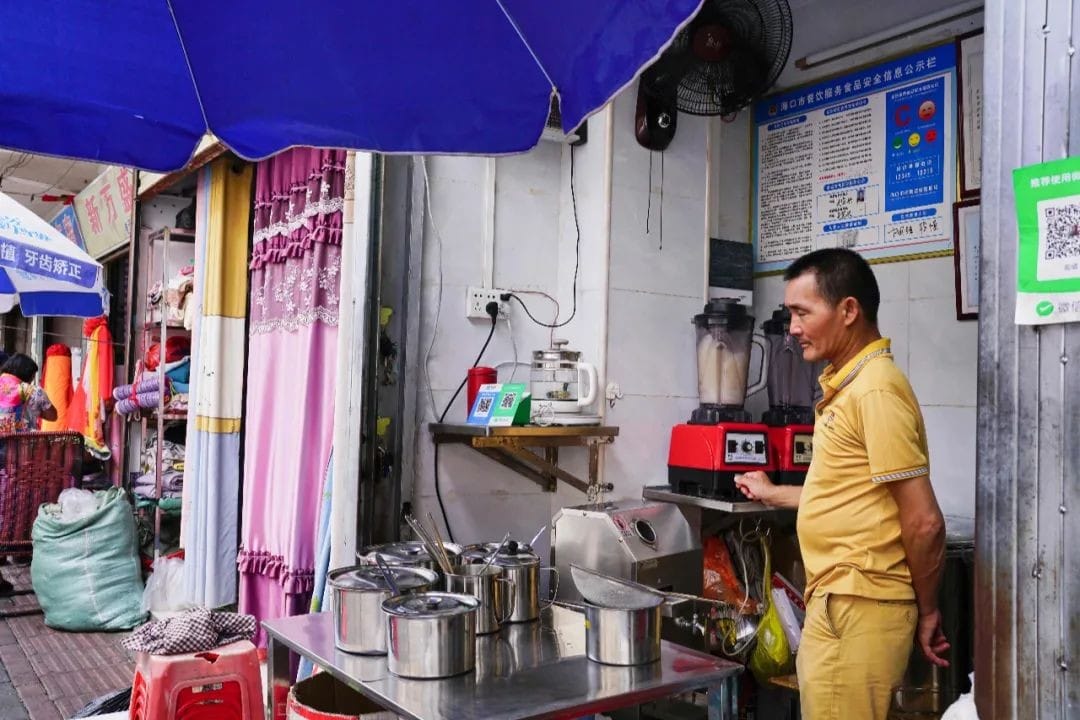
Like all provincial capitals, Haikou serves as the transportation hub of Hainan Province.
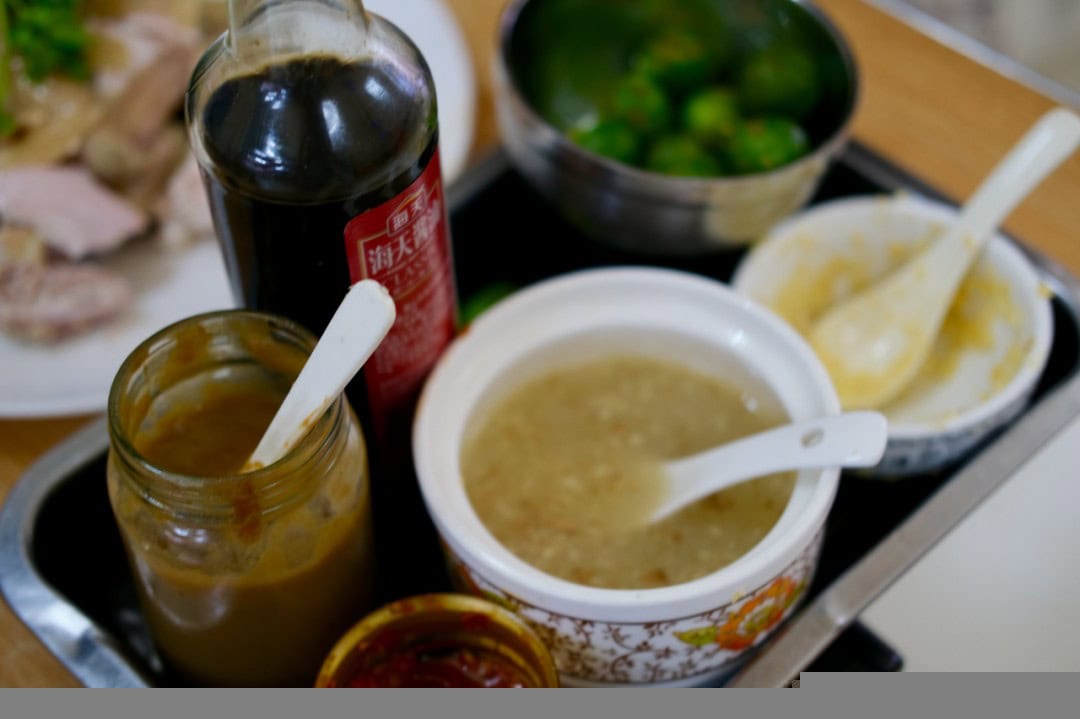
High-speed trains conveniently reach almost all tourist cities in Hainan (Haikou to Sanya by high-speed train takes 1.5 hours). If you want to explore lesser-known bays, starting from Haikou is the most logical choice.
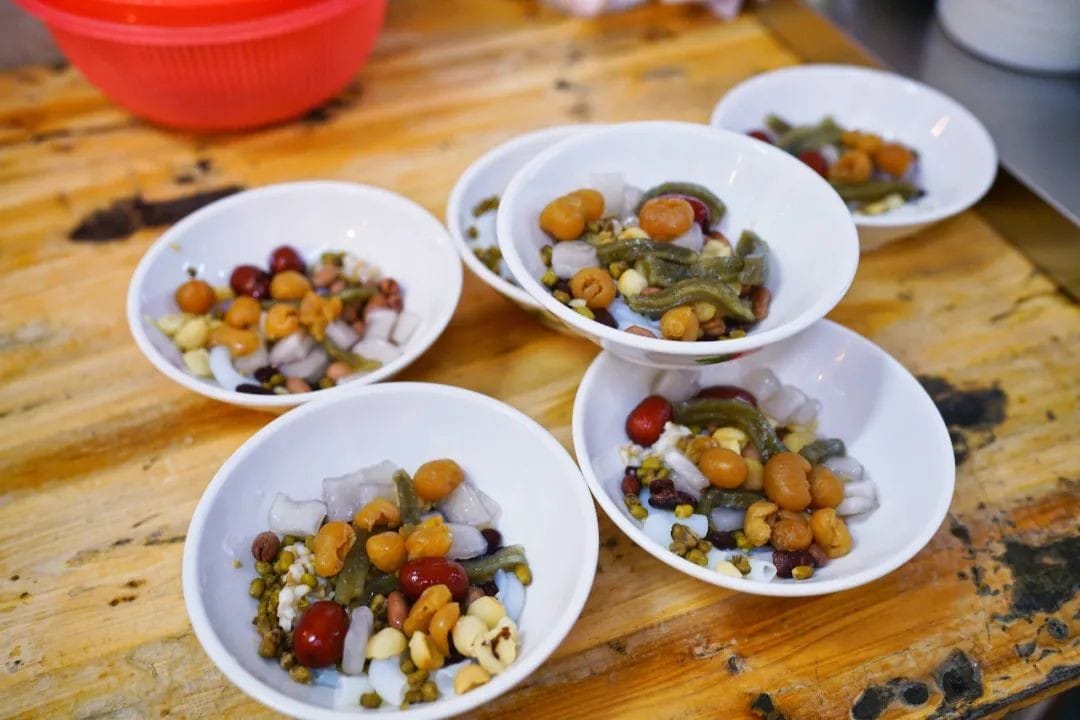
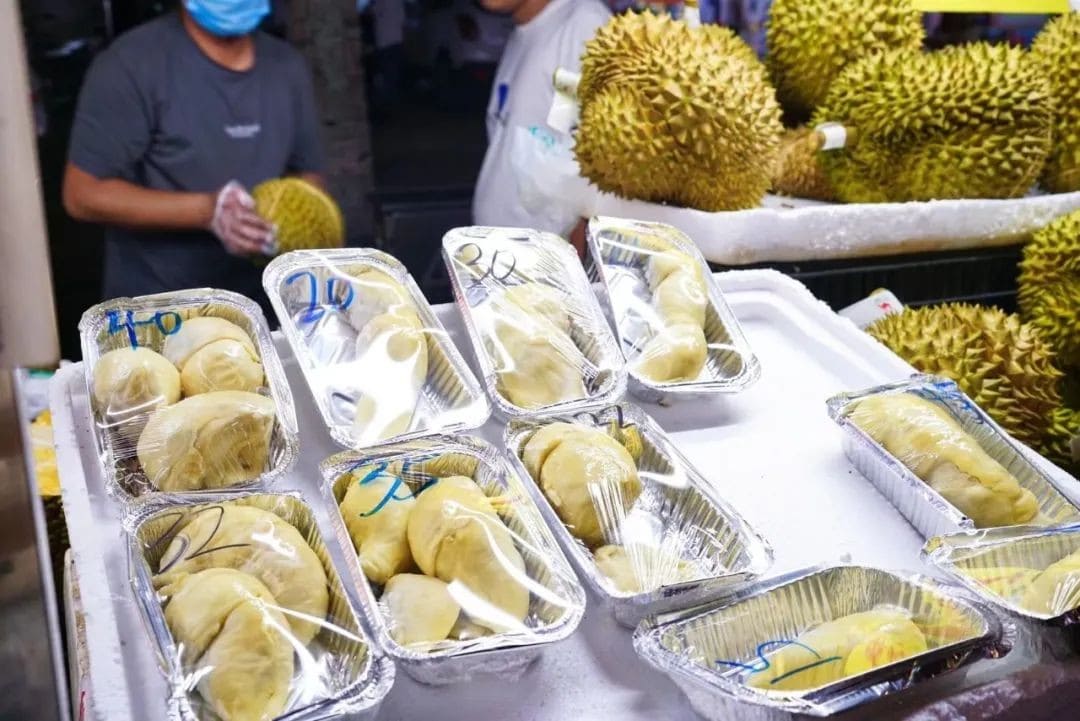
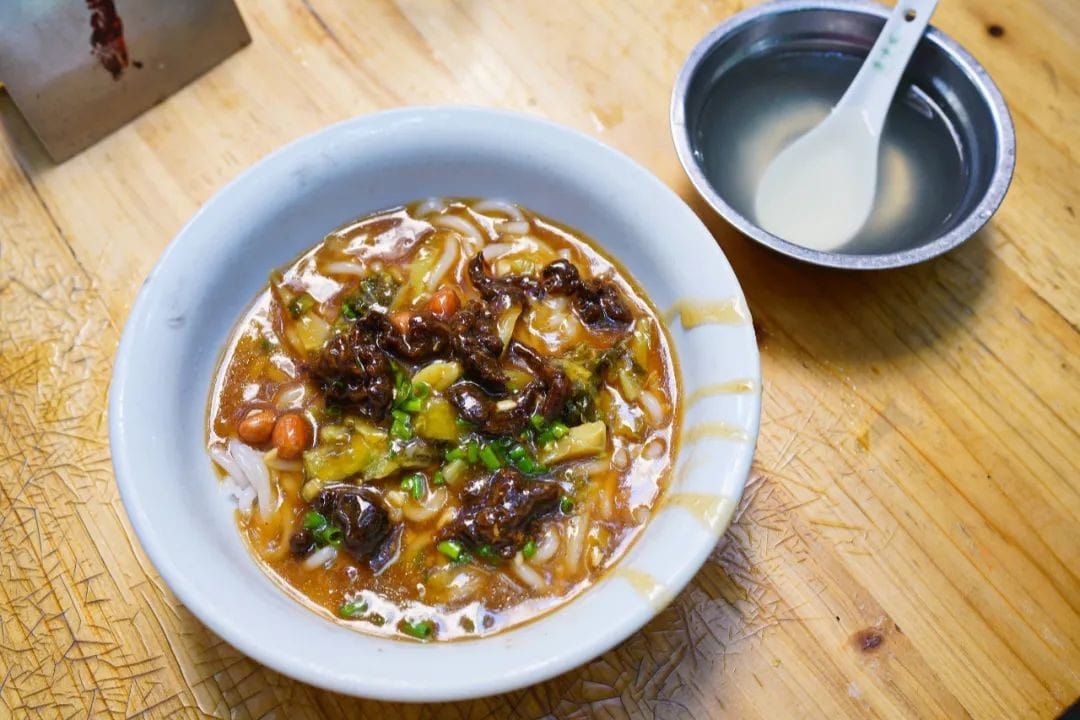
Apart from its geographical and provincial capital advantages, Haikou is also worth a visit.
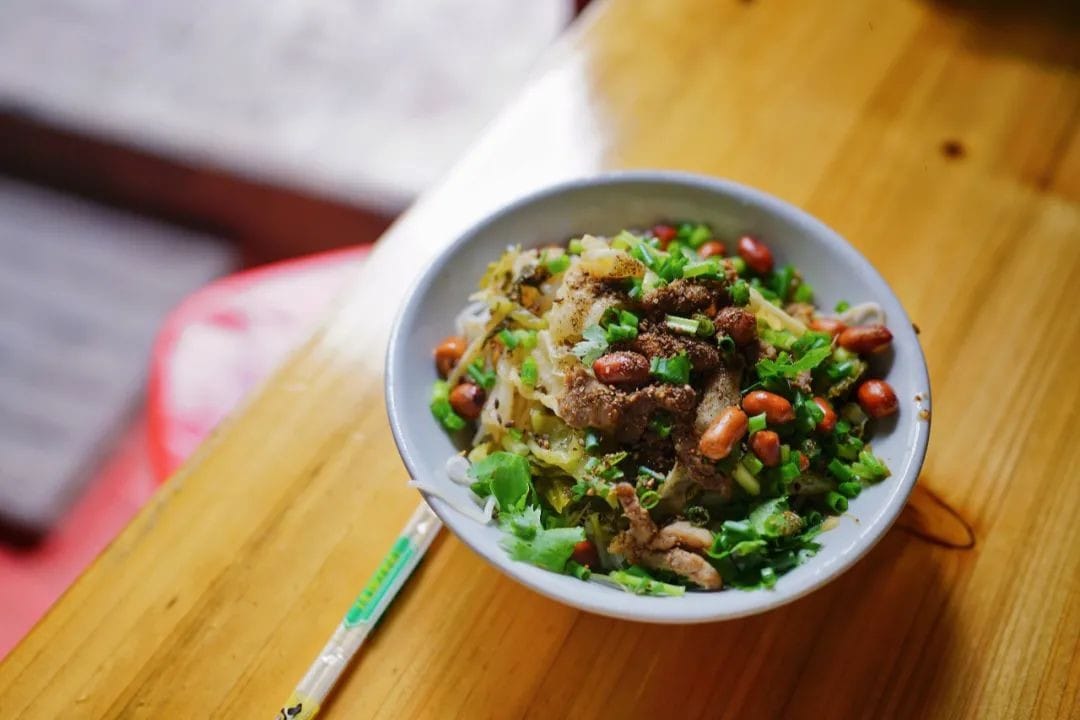
Sanya represents Hainan as a place of sunshine, beaches, and luxury hotel clusters.
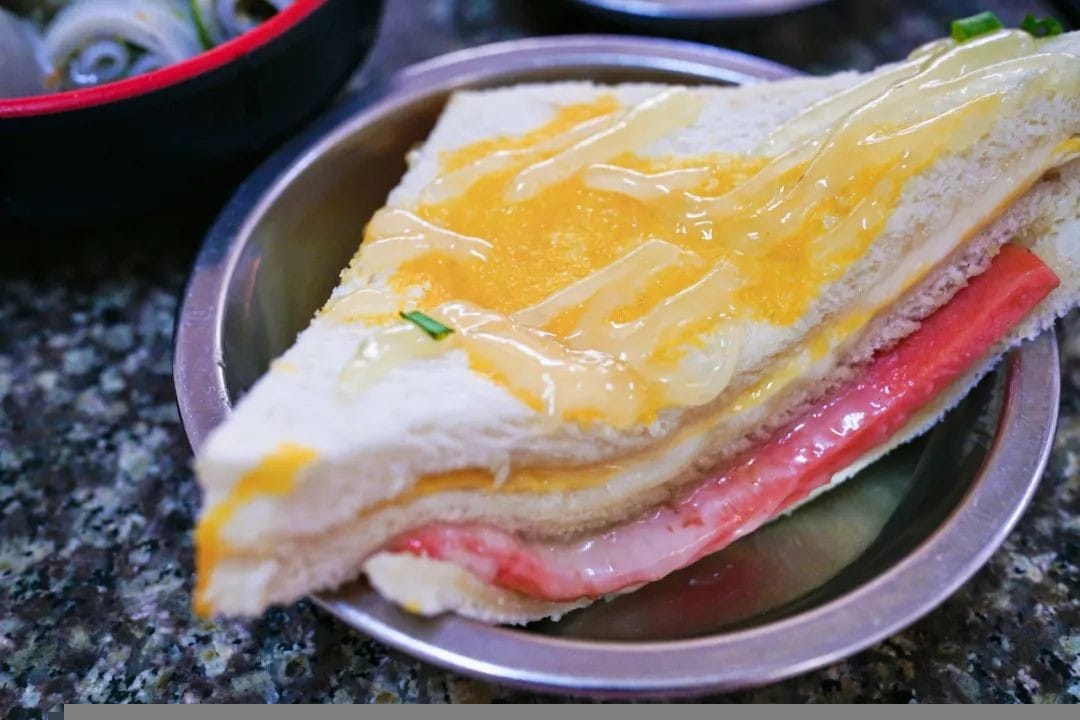
In contrast, the provincial museum, markets, and century-old in Haikou offer the most comprehensive insights into Hainan’s history, lifestyle, and cuisine.
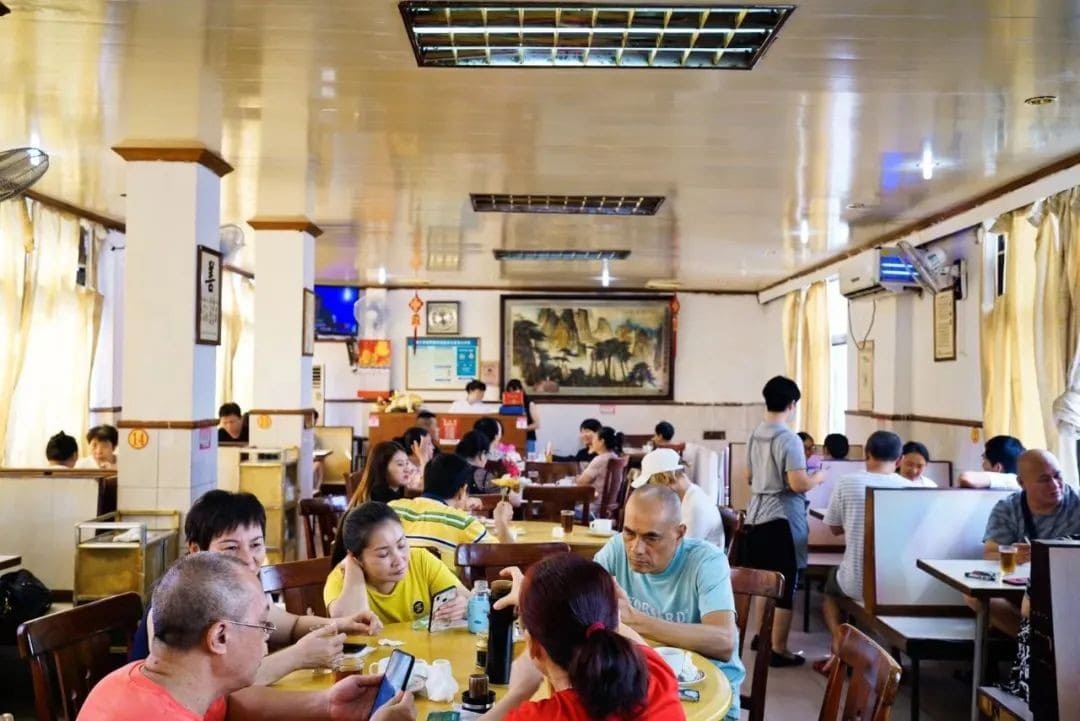
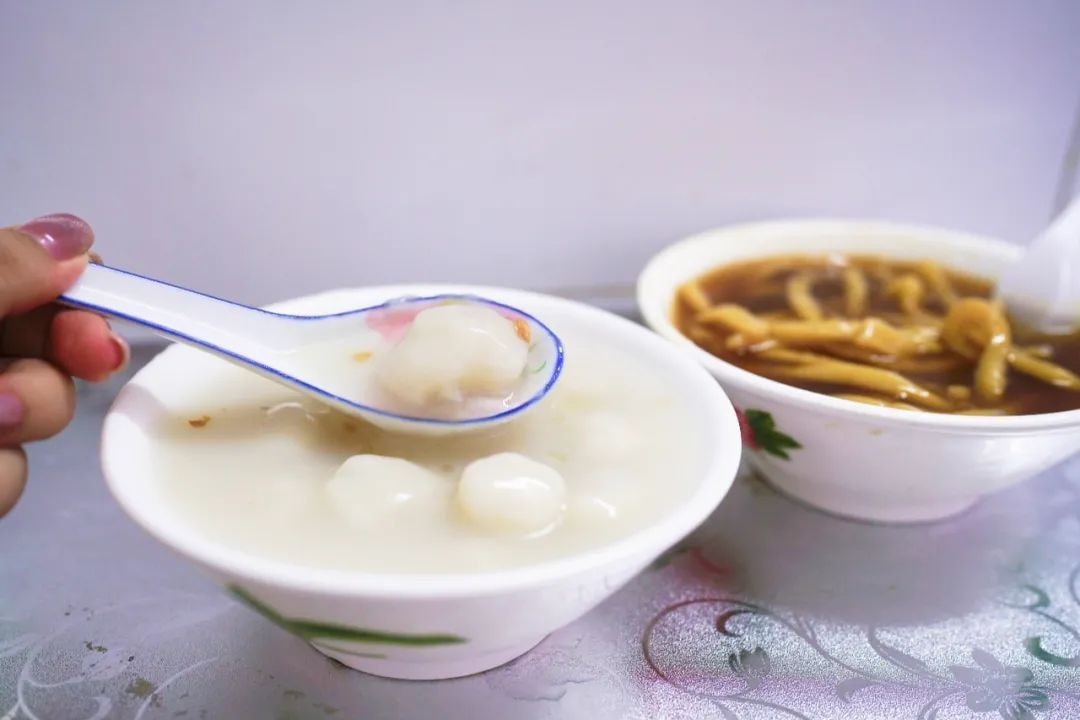
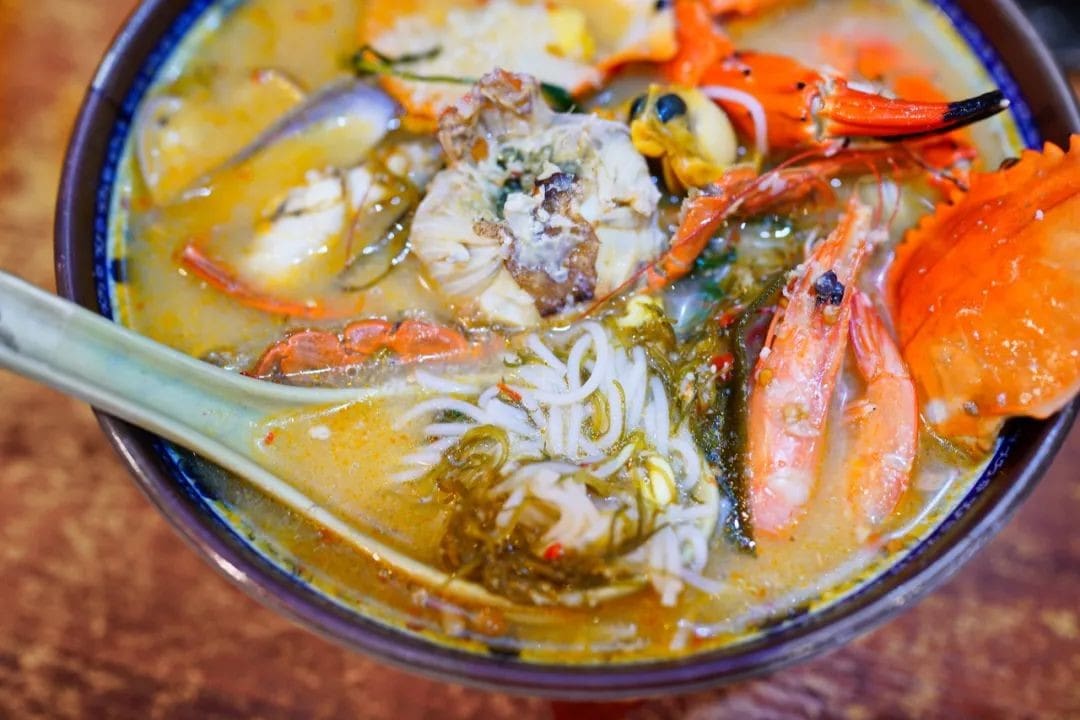

When I visited Haikou in September, the city was still enjoying the height of summer, so I focused on eating.
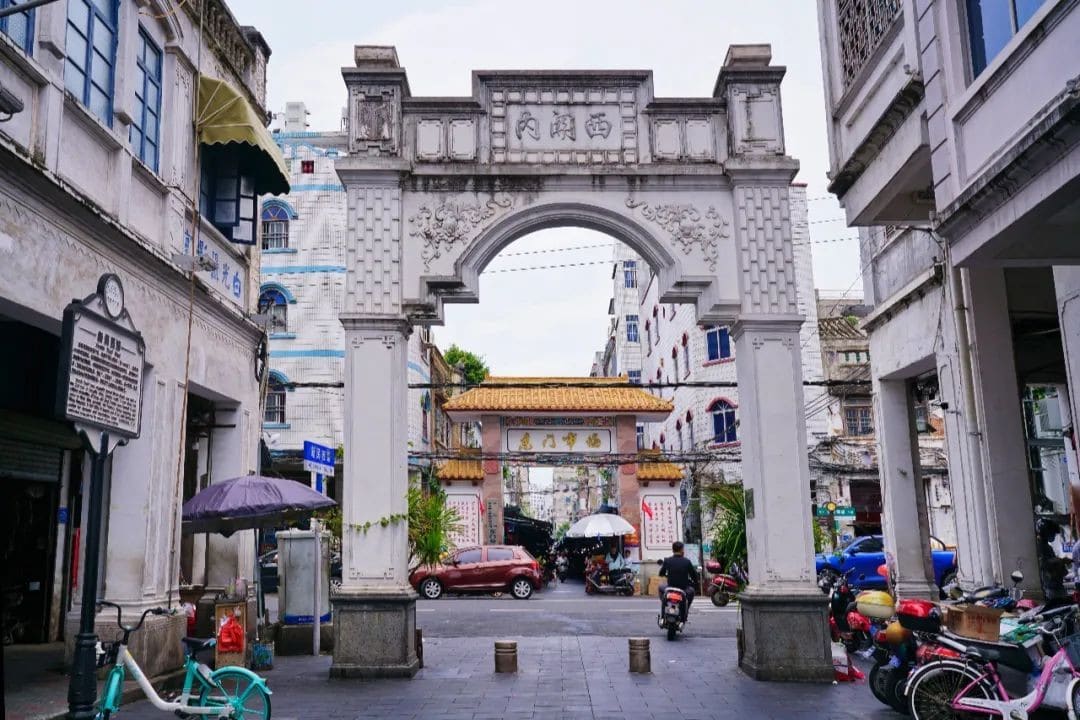
It’s all Sanya’s fault. Before this trip, my impression of Hainan cuisine was limited to Northeastern dishes and KFC.
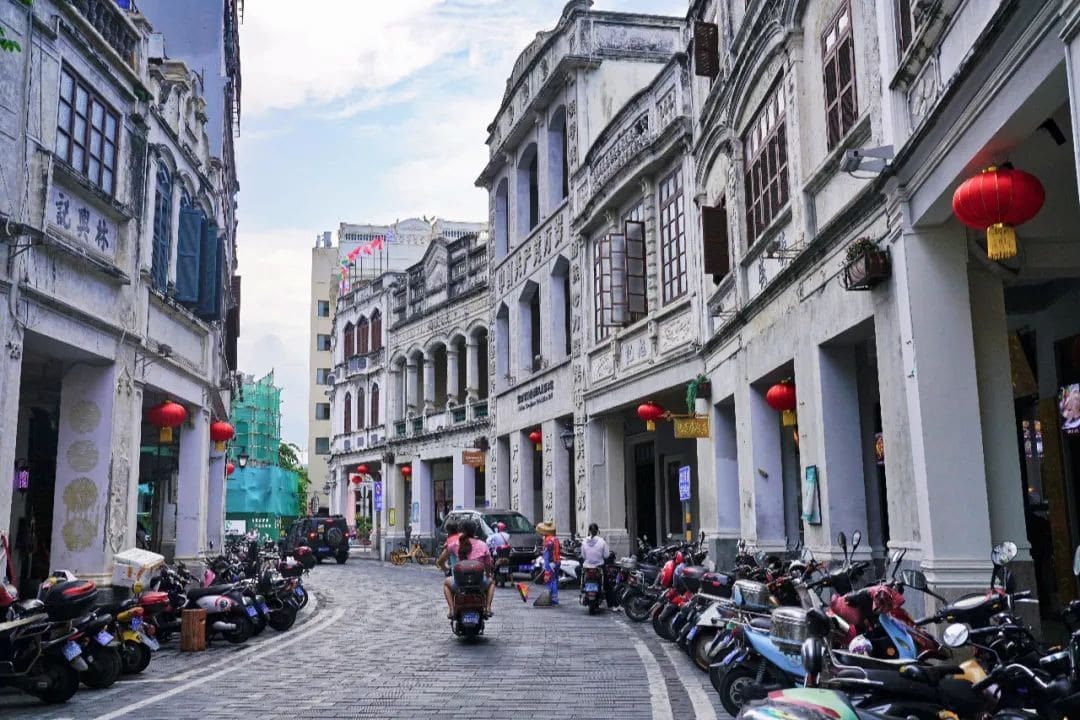
Although I haven’t eaten my way through the entire Hainan Island, after just three days and two nights, I can confidently assert that the best food in Hainan is in Haikou.
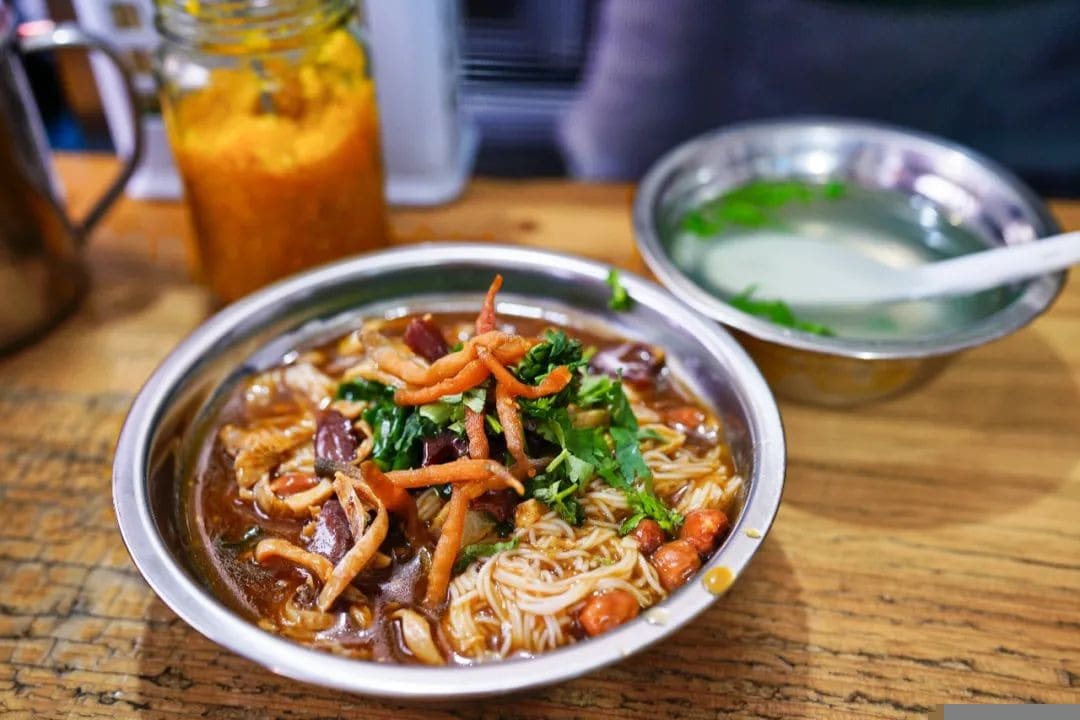
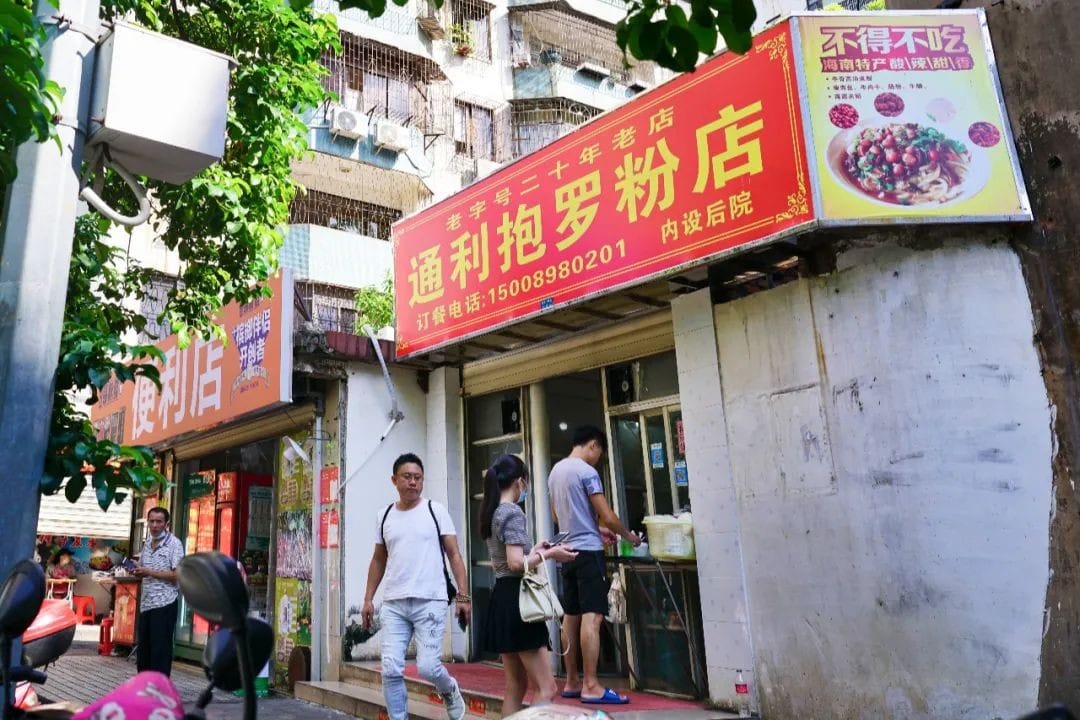
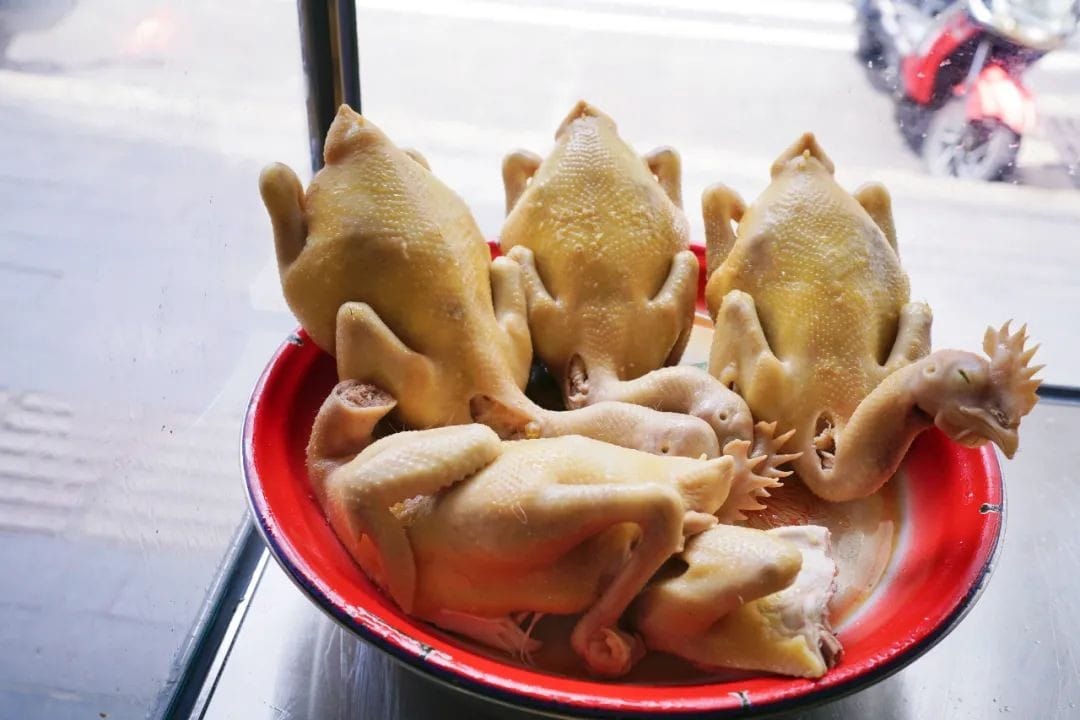
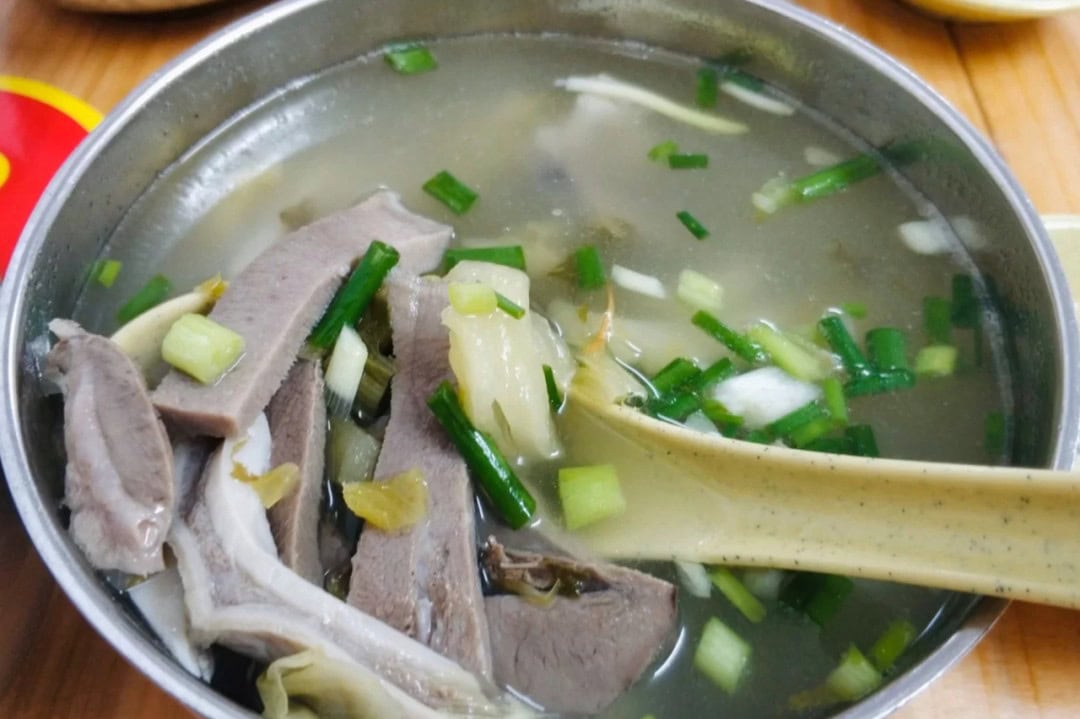
8:00 A.M.
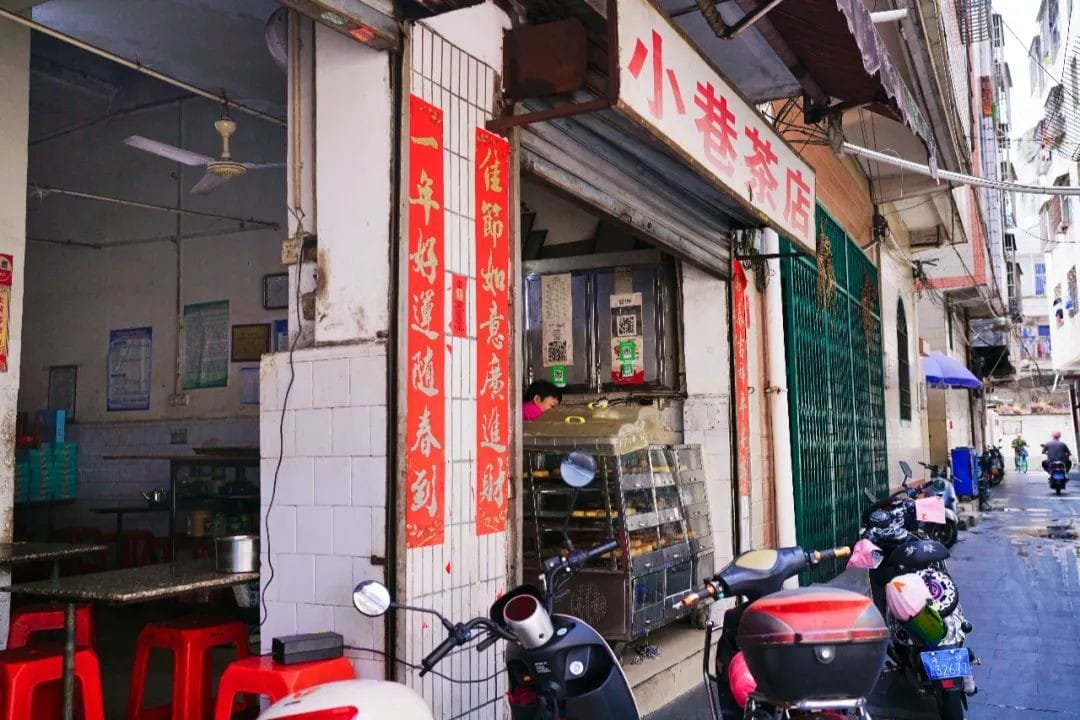
Fans of rice noodles can’t miss Hainan.
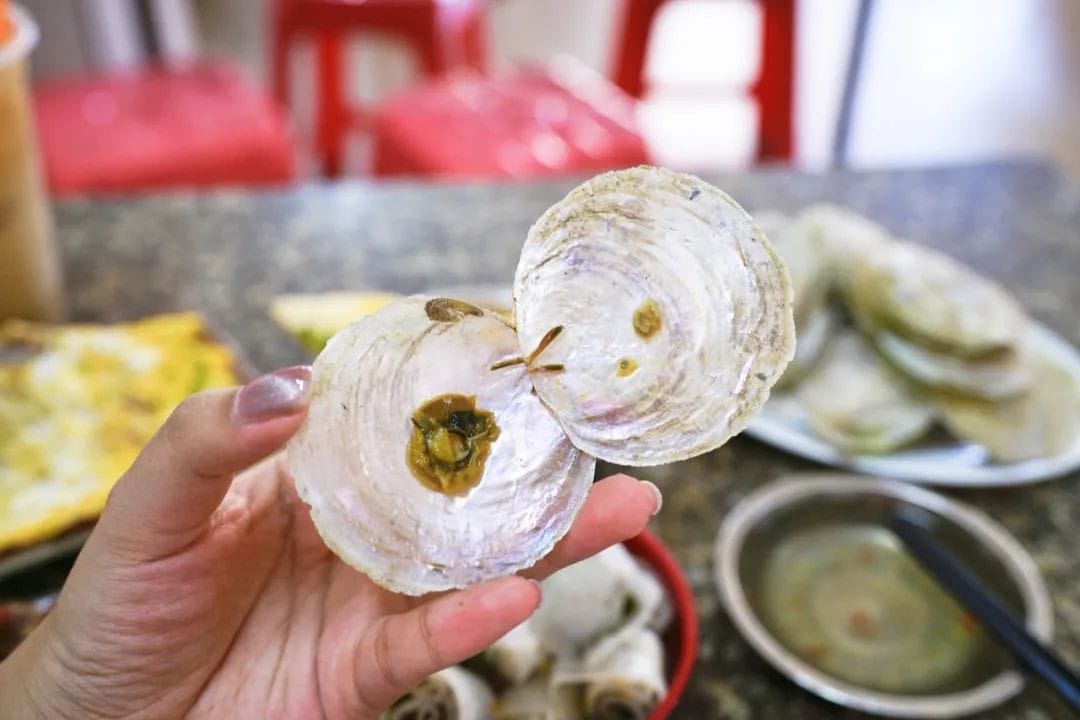
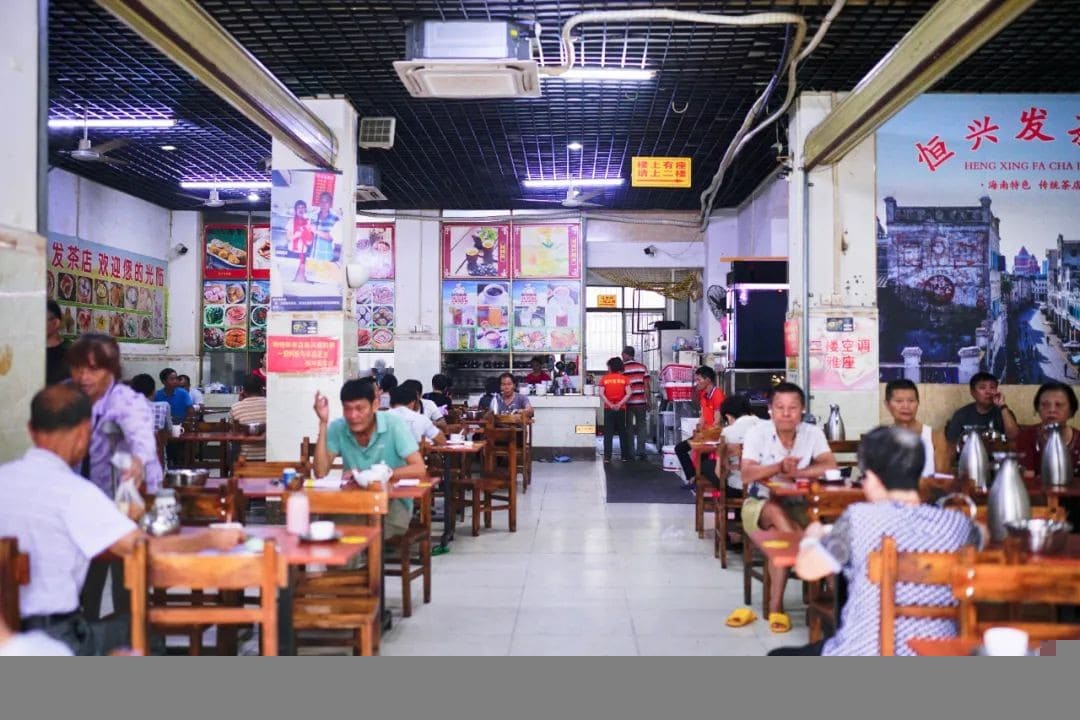
When it comes to rice noodles, Hunan, Jiangxi, and Guangxi all have something to say. Hainan, though often quietly in the background when it comes to food, actually has a variety of regional rice noodles that showcase a spirit of inclusiveness.
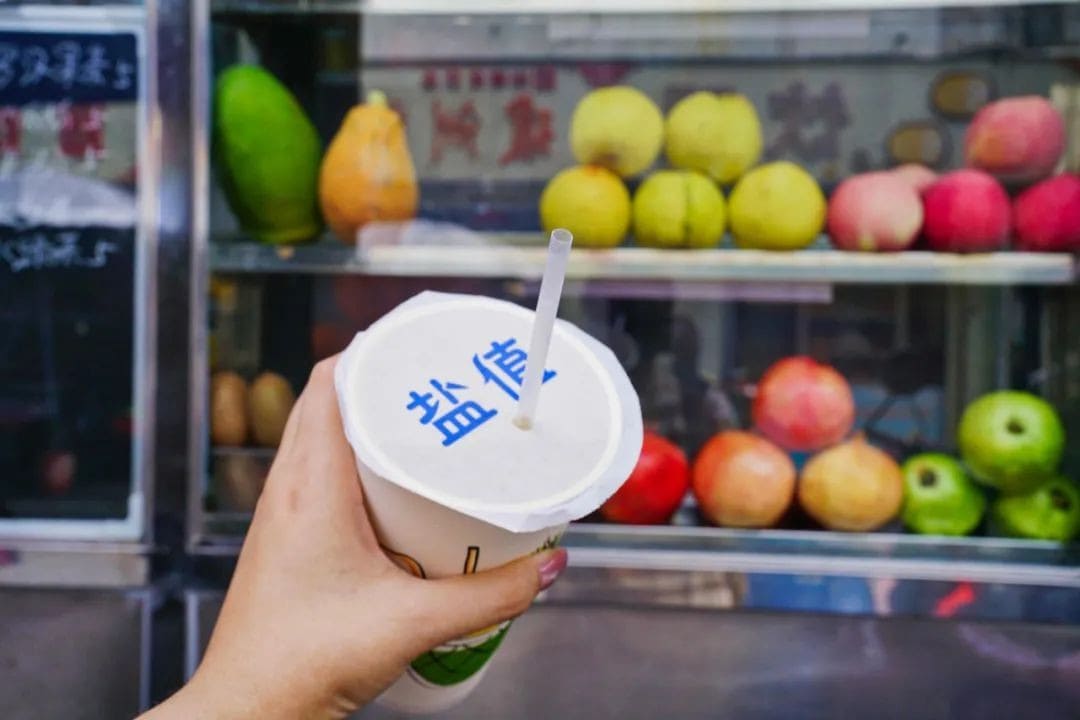
The “Big Four” of Hainan rice noodles—can you distinguish them by their noodles and toppings?
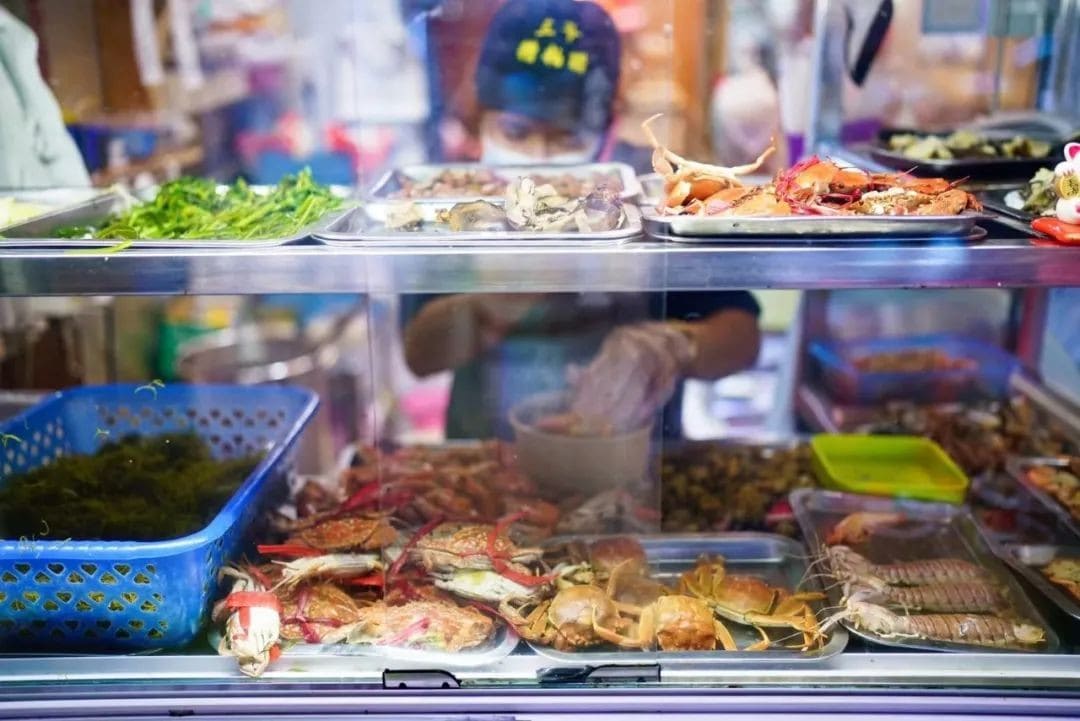
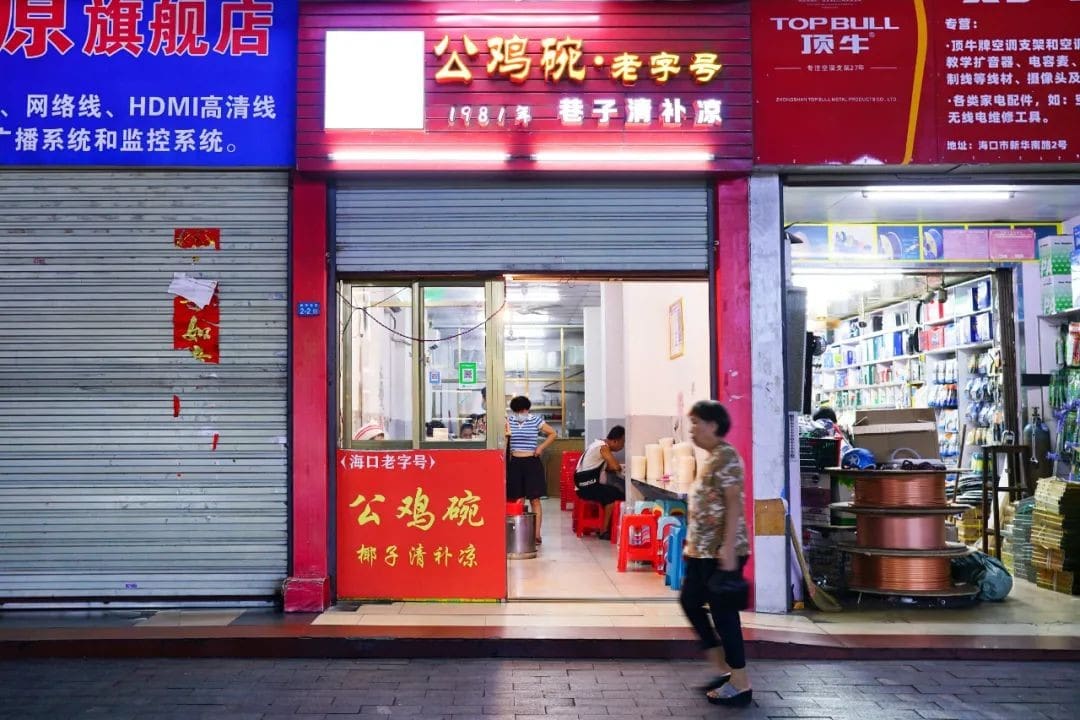
The answers are Hainan rice noodles, Bao Luo rice noodles, sour rice noodles, and Hou An rice noodles.
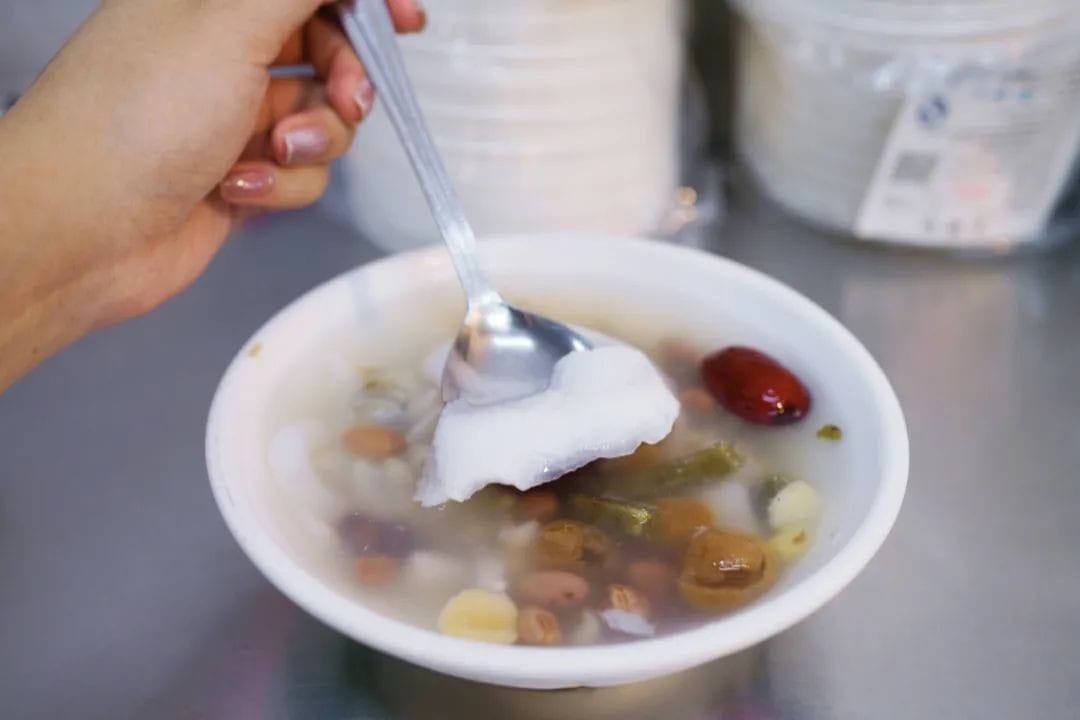
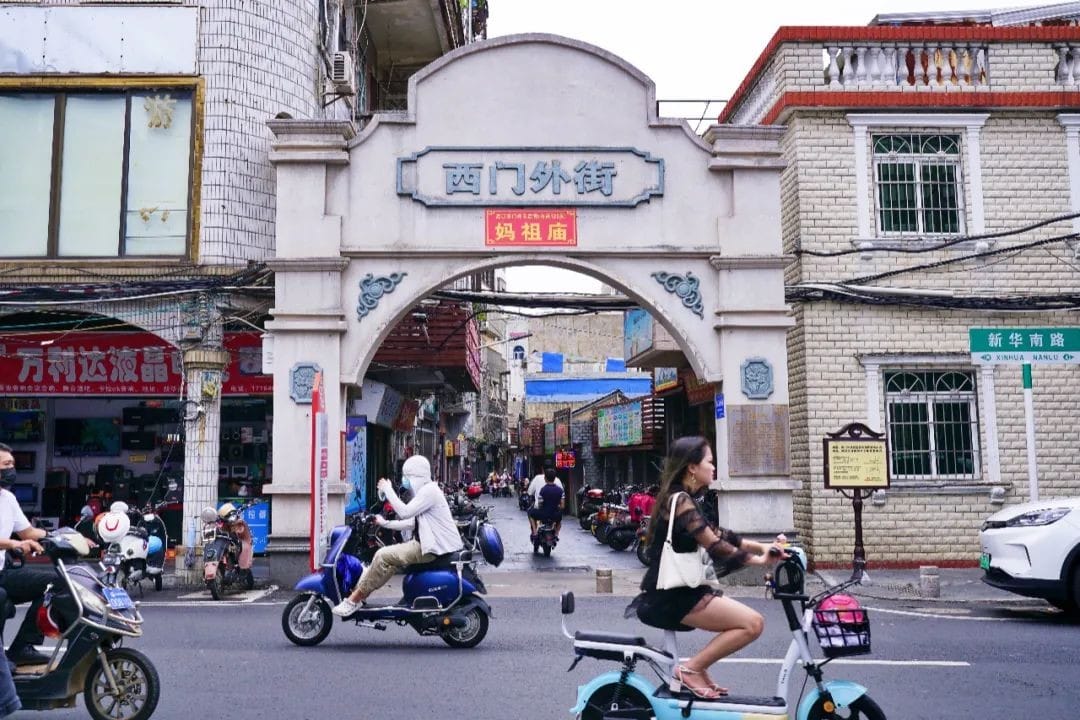
Yamei Authentic Hainan Rice Noodle Shop
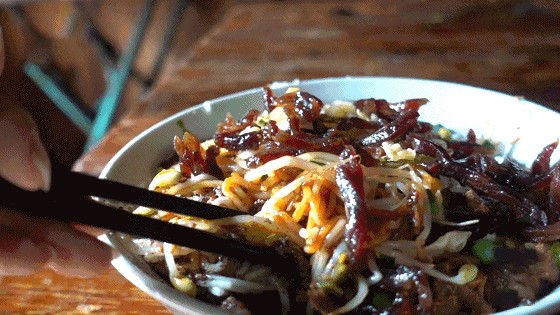
📍64 Ximing West Road, Longhua District
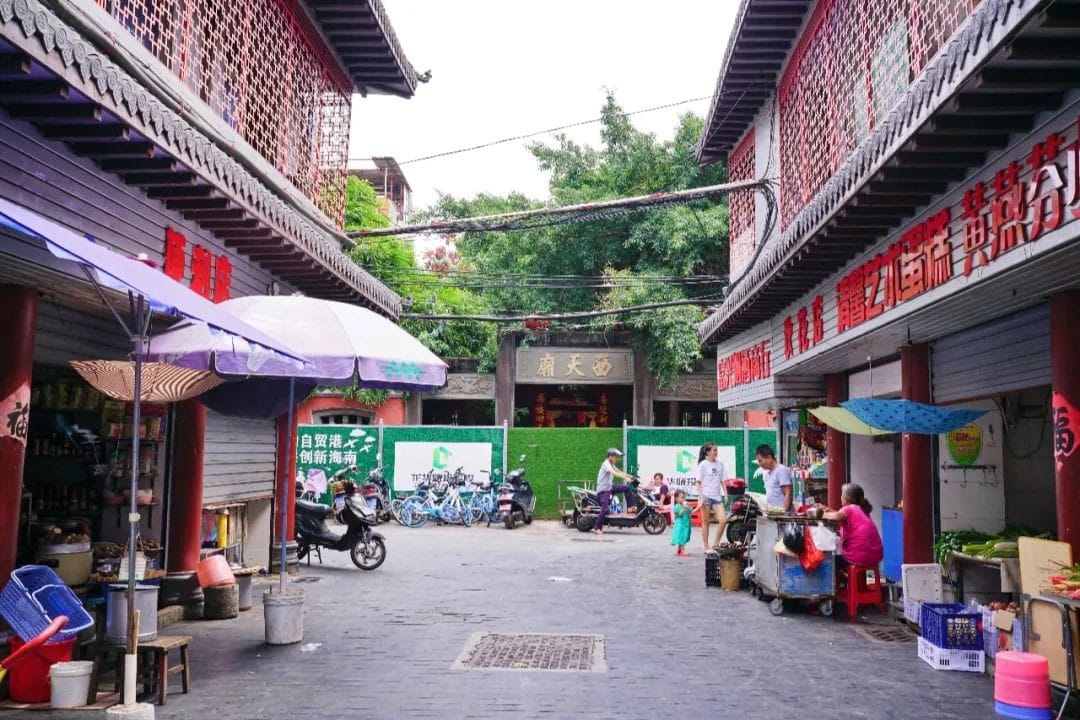
💰¥10/person
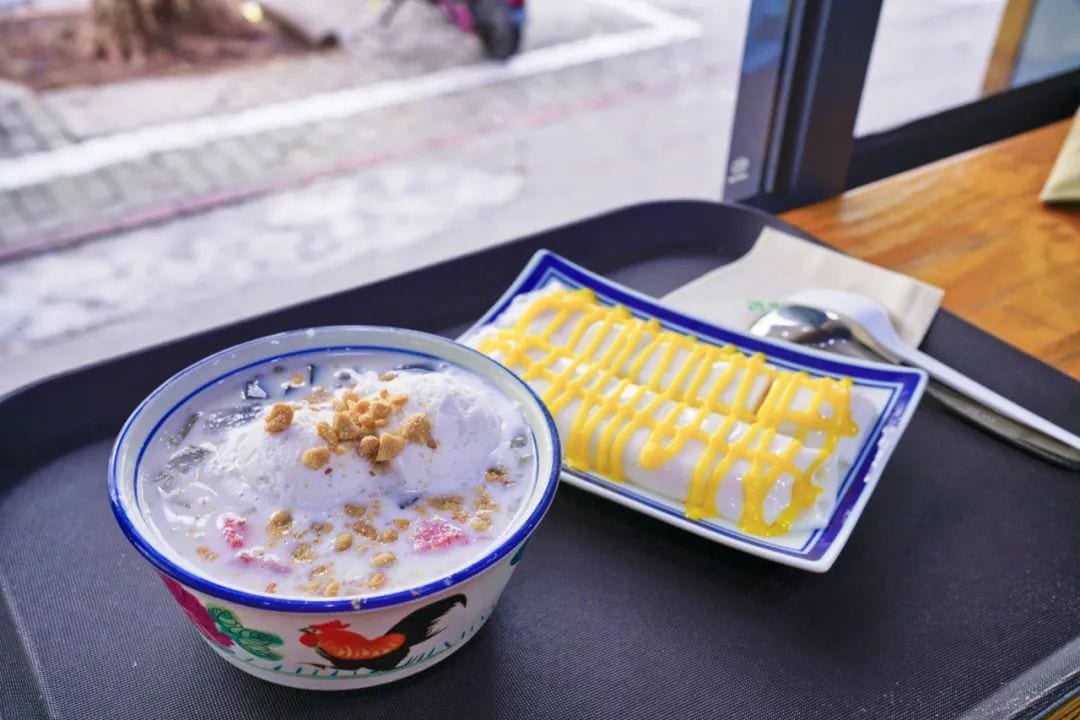
Although Hainan rice noodles are proudly named after the entire island, they are most commonly enjoyed in Haikou.
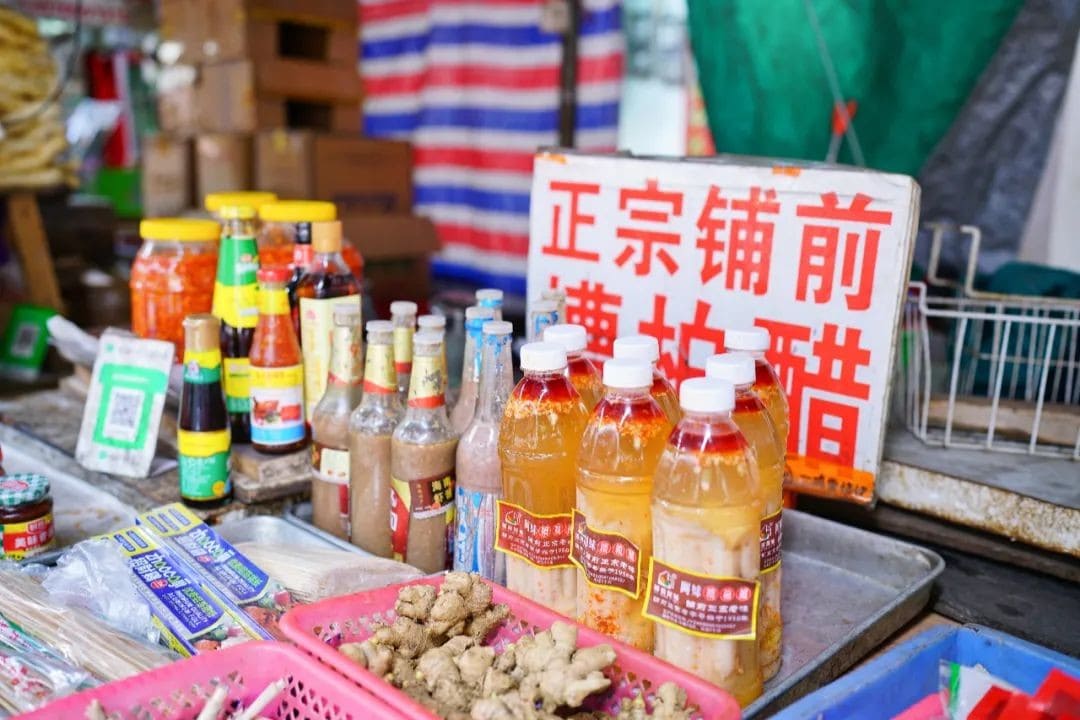
In Hainan, rice noodles can be roughly categorized into two types based on their preparation methods: soup noodles and marinated noodles. As the name suggests, soup noodles are served in broth, while marinated noodles are mixed with a base of braising sauce and eaten as a cold dish. Hainan noodles are a type of marinated noodles.
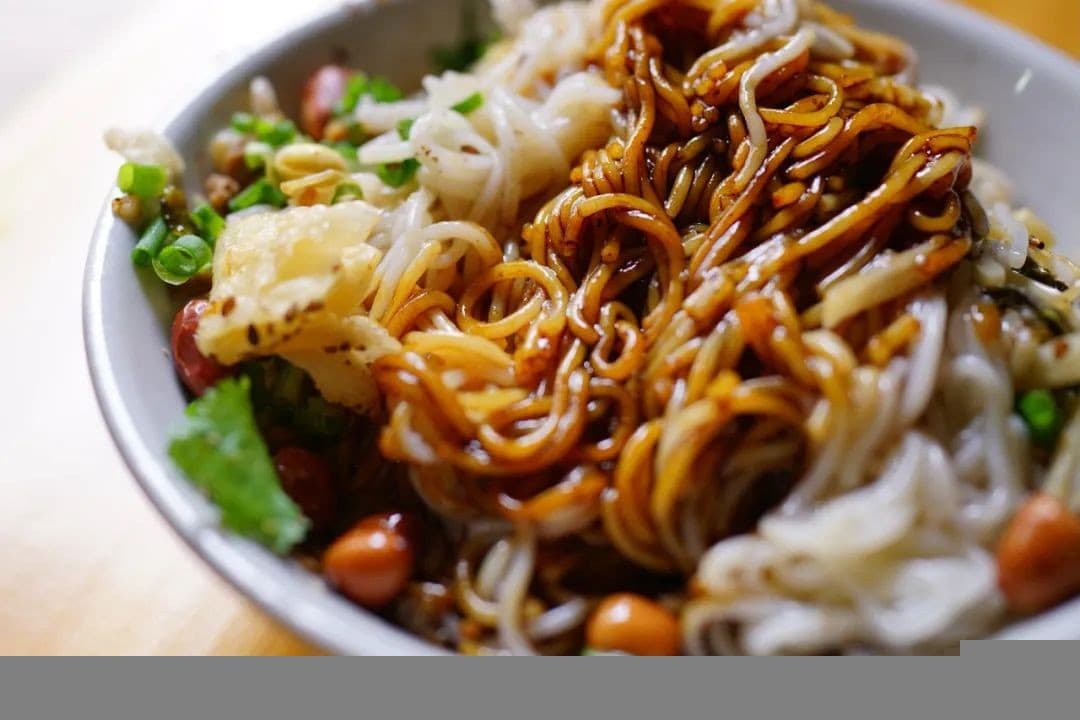
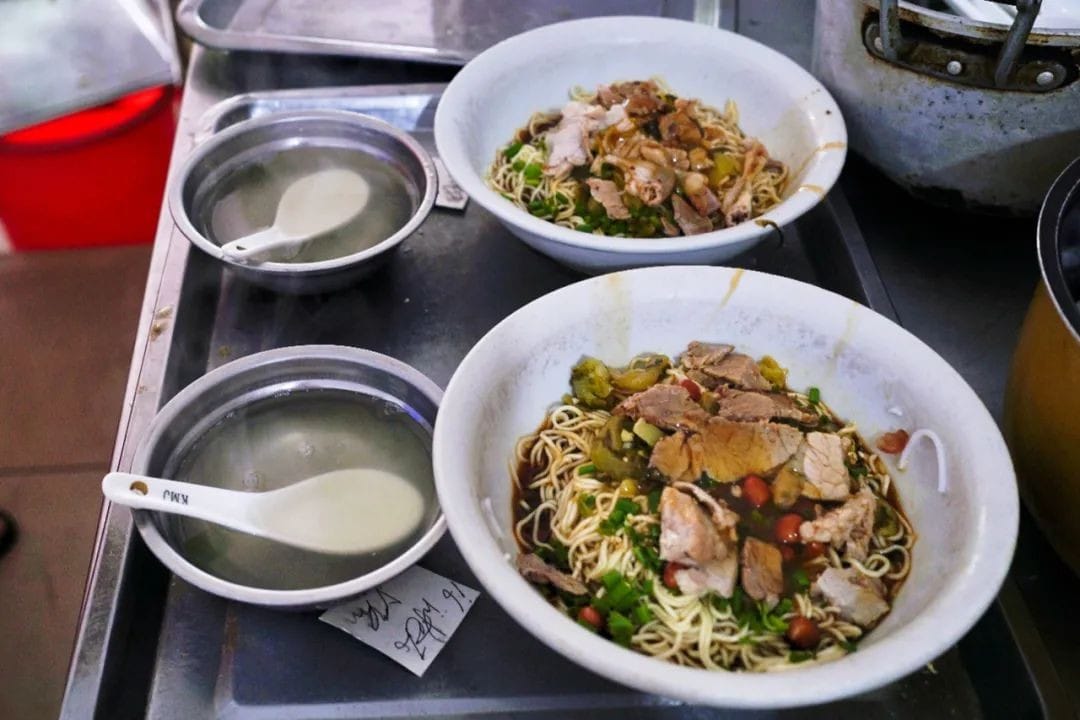
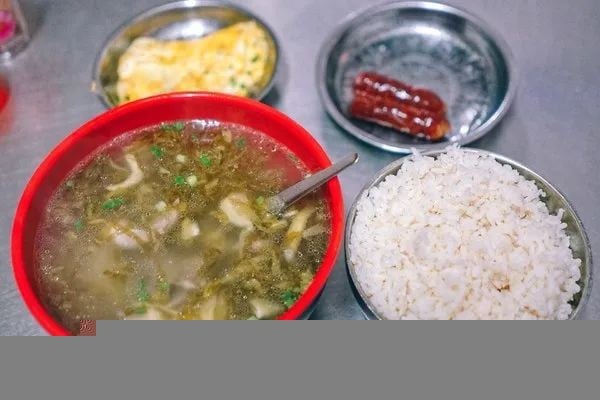
The establishment I visited, Yamei, is quite famous in Haikou, but its storefront is unassuming. If I hadn’t done my homework beforehand, I probably would have walked past it ten times without ever stepping in.
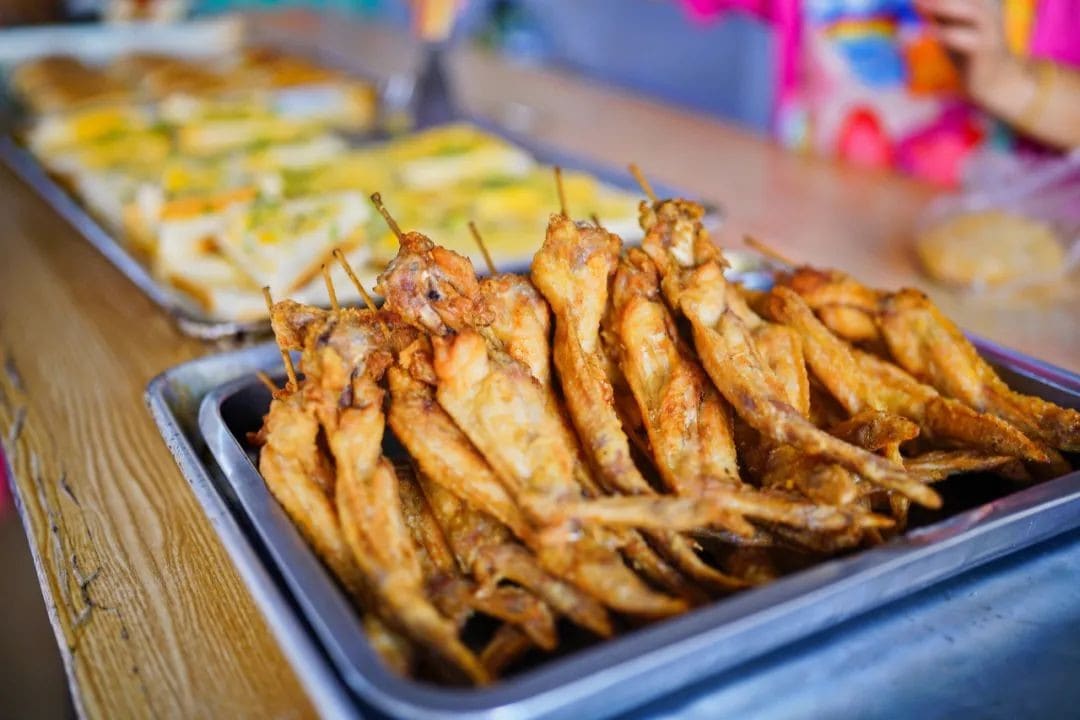
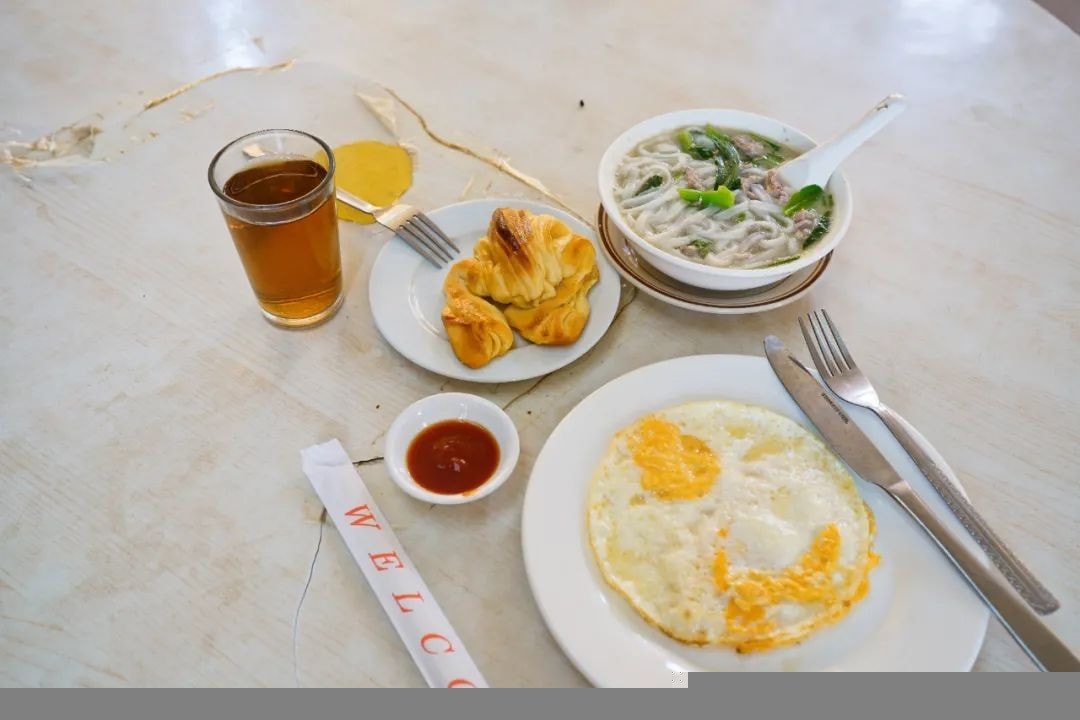
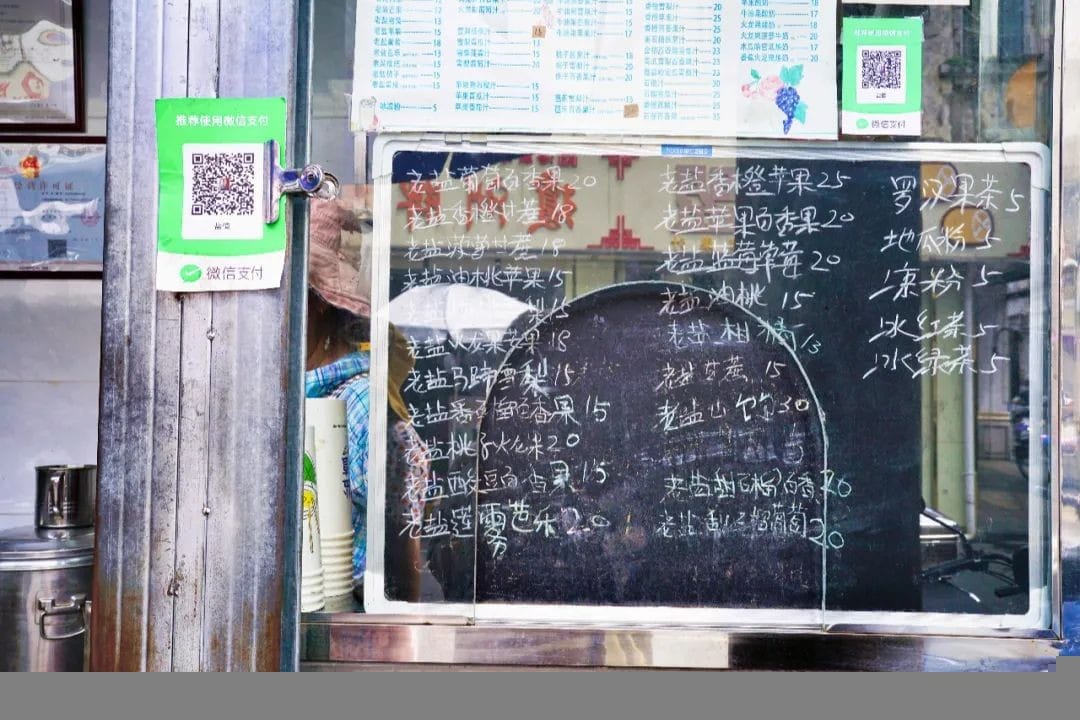
The toppings were arranged in three full rows. In addition to the usual ingredients like shredded beef, crispy noodles, bean sprouts, and peanuts, adding conch meat is a specialty of Yamei’s.
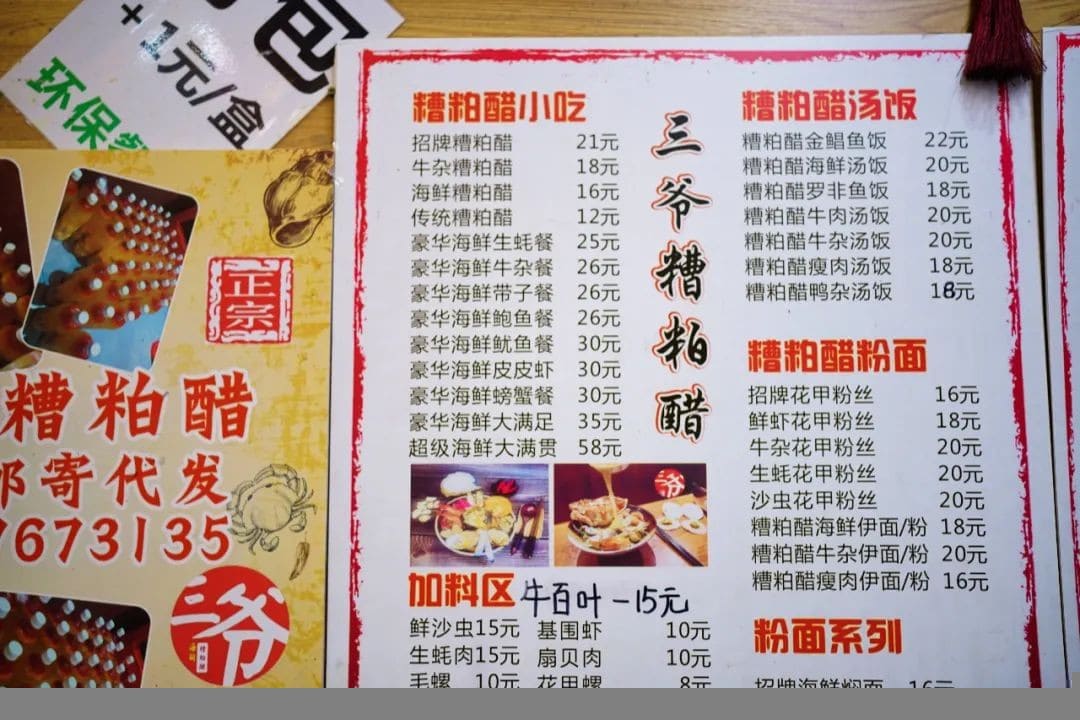
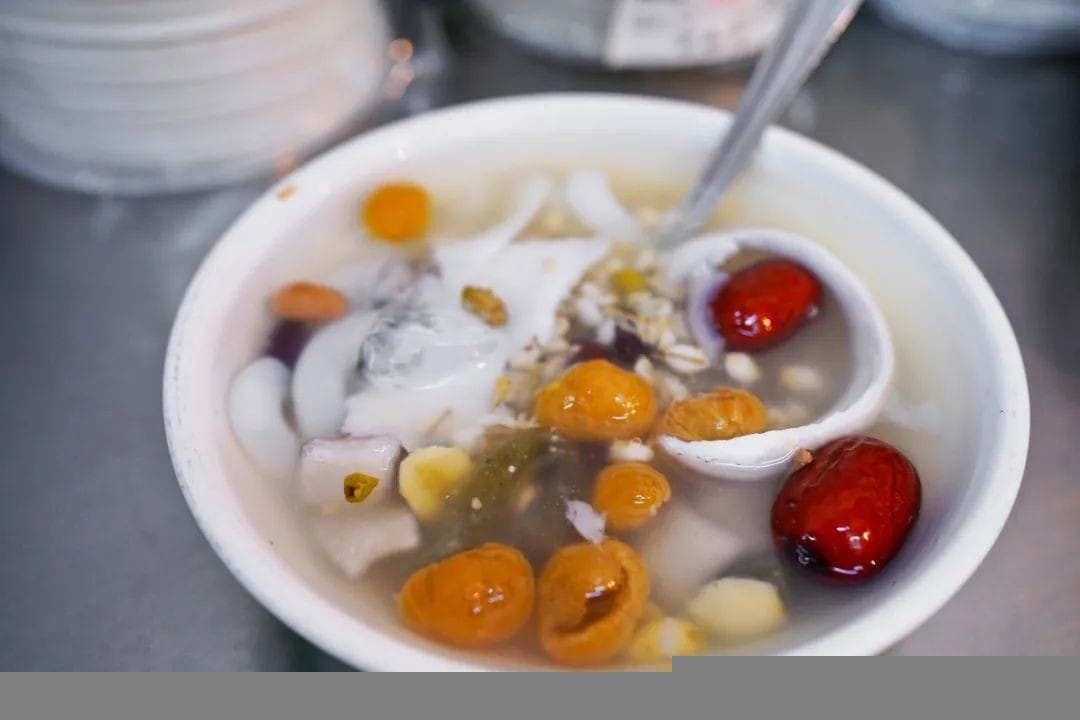
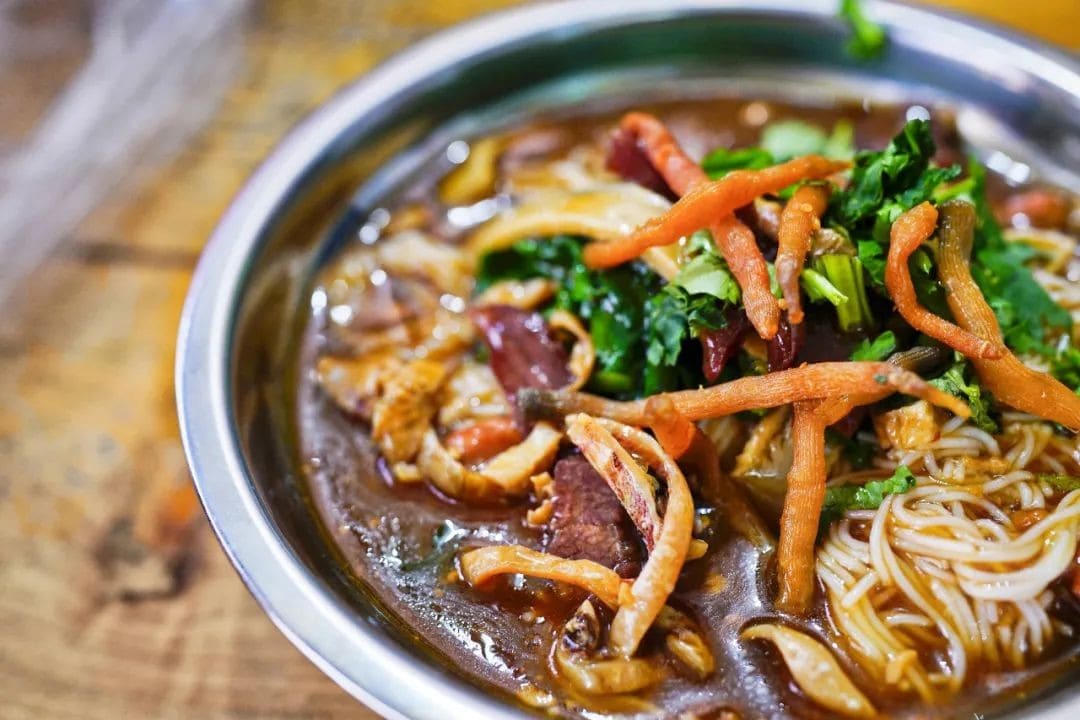
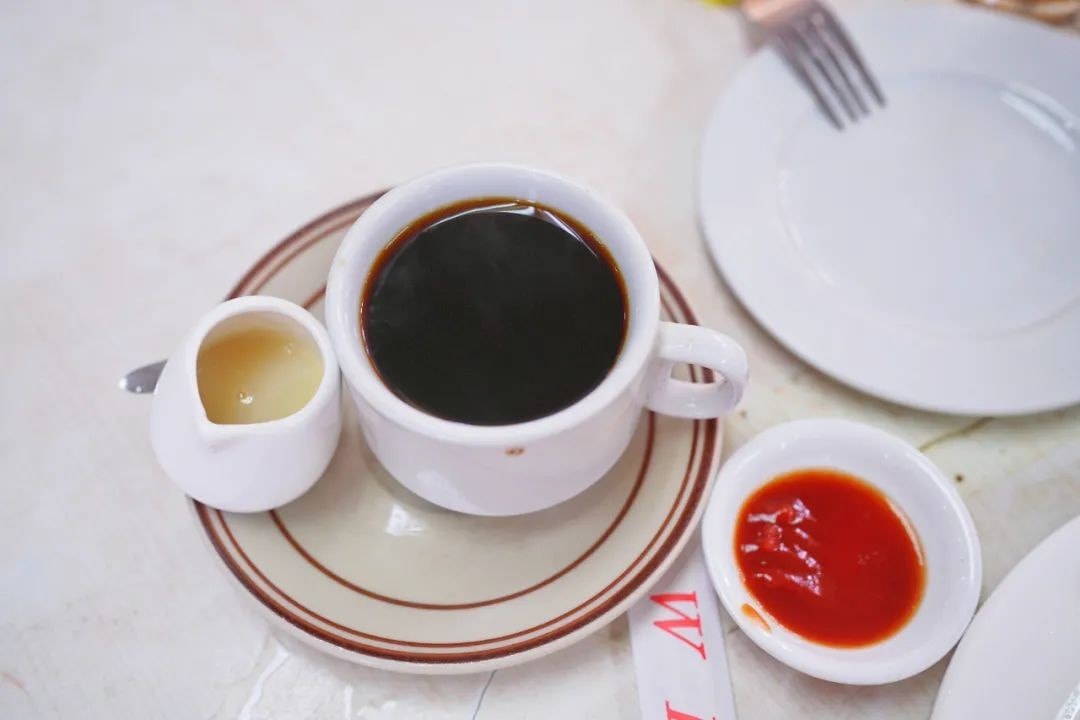
Their seasoning was perfectly to my liking. It looked like a lot of ingredients were used, but the taste was surprisingly refreshing.
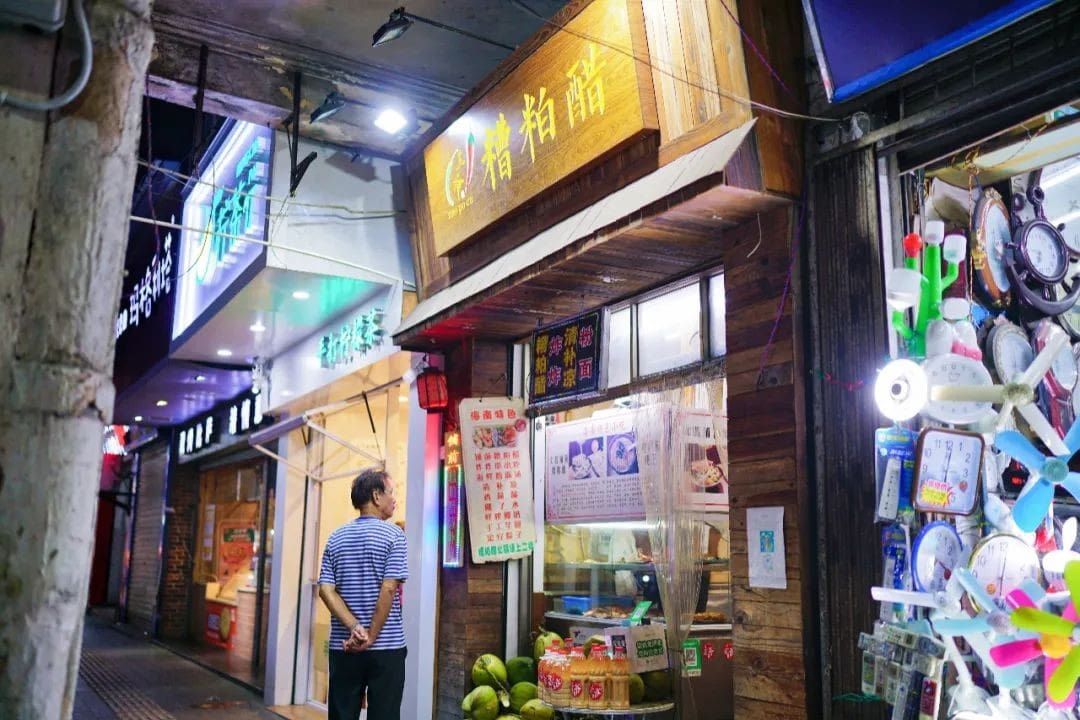
The proprietress told me that the braising sauce includes a secret ingredient—bamboo shoot juice. The salty and savory sauce was evenly mixed into the delicate Hainan noodles, and I instantly devoured them in a frenzy!
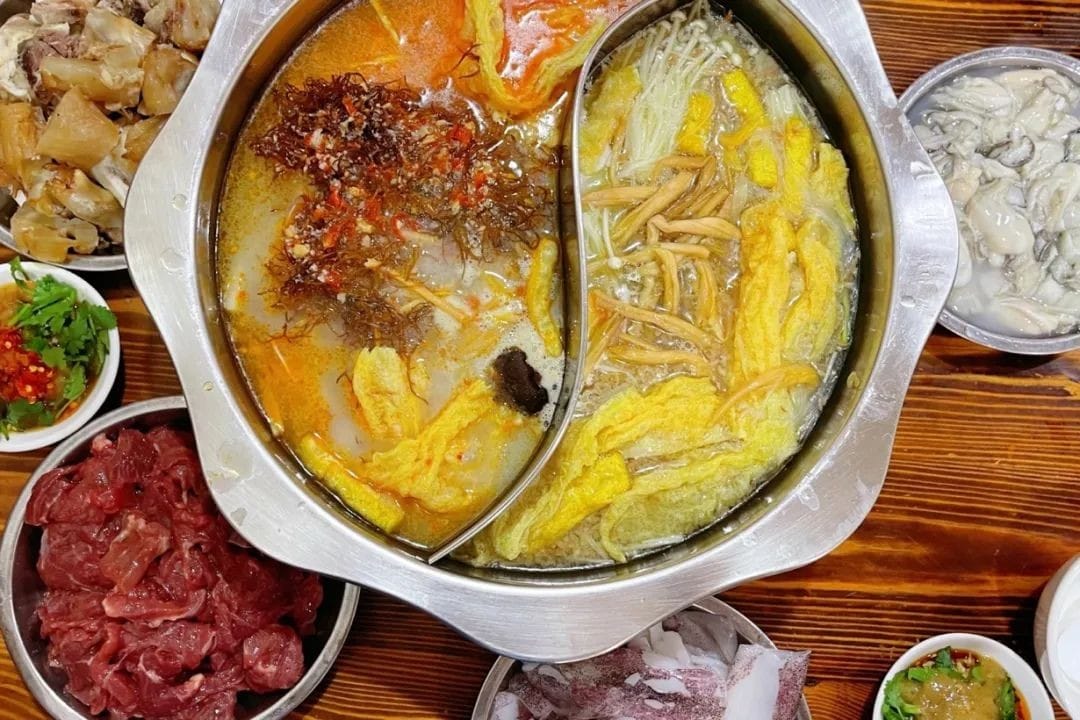
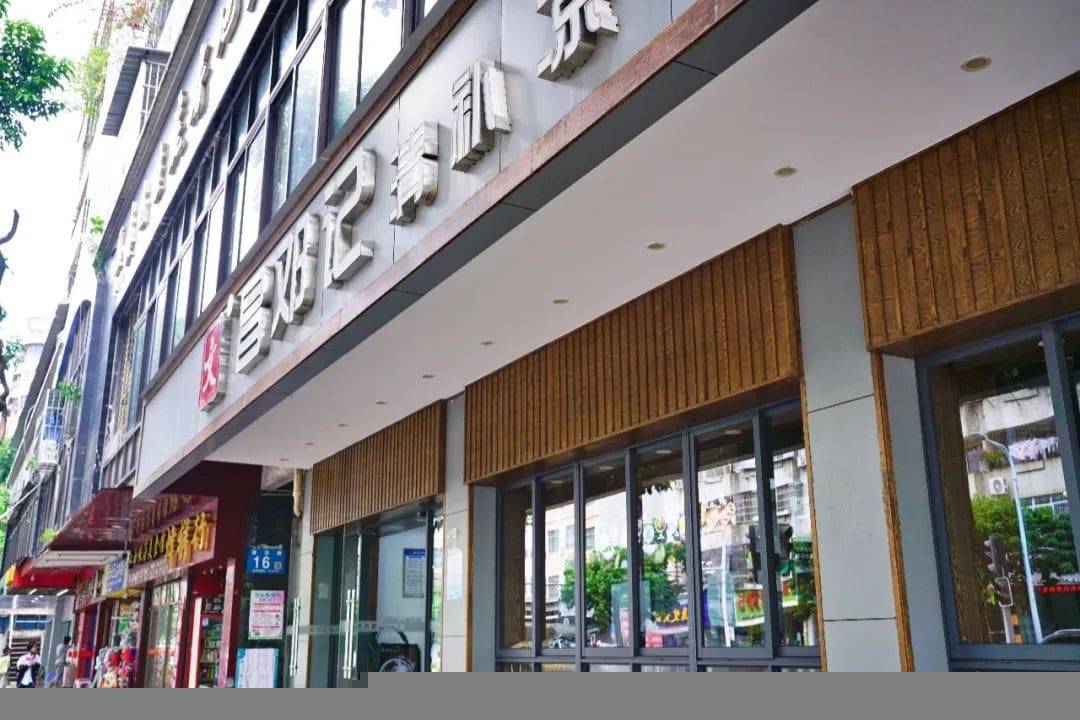

Tongli Baoluo Noodle Shop
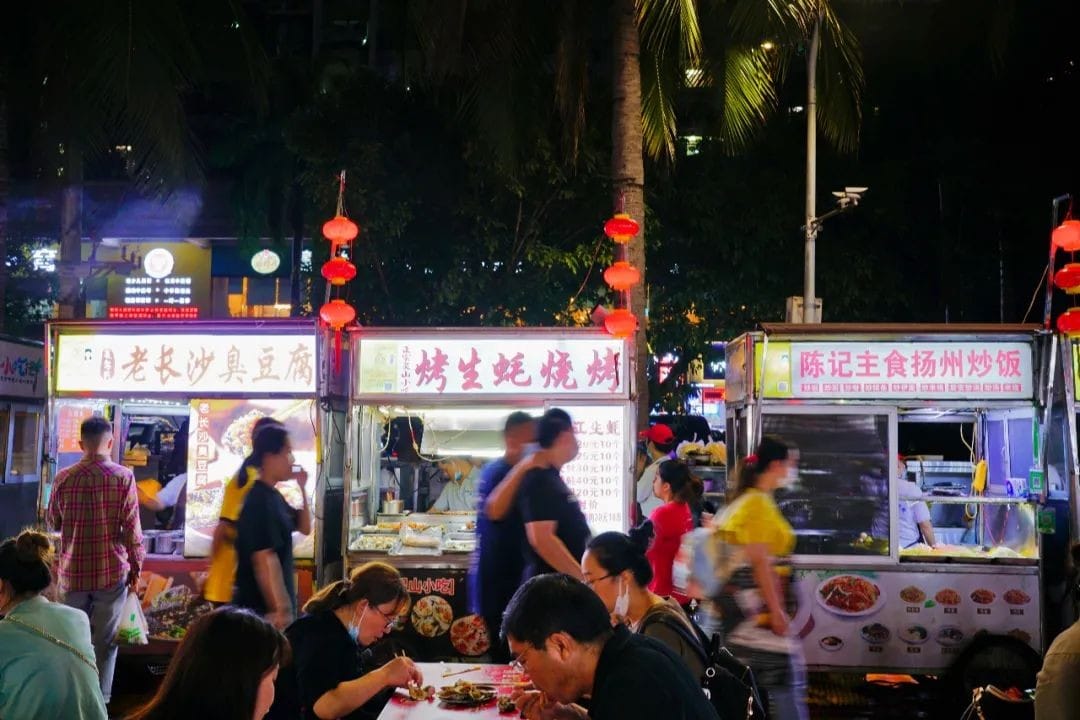
📍1-6 Guomao First Heng Road, Longhua District
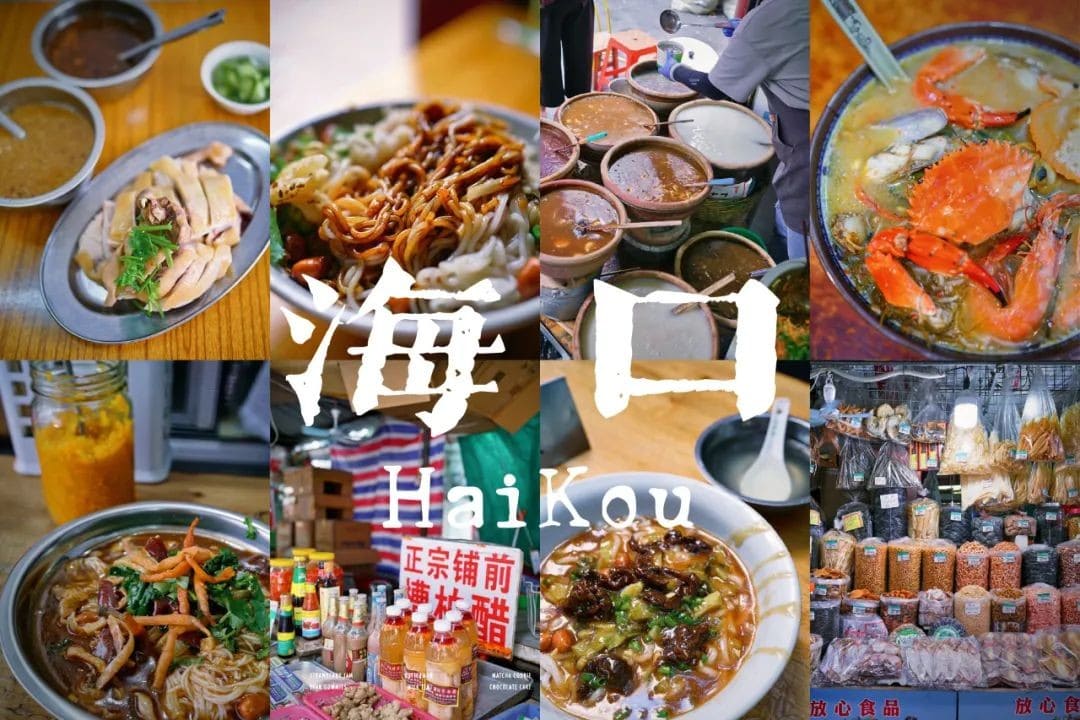
💰¥11/person
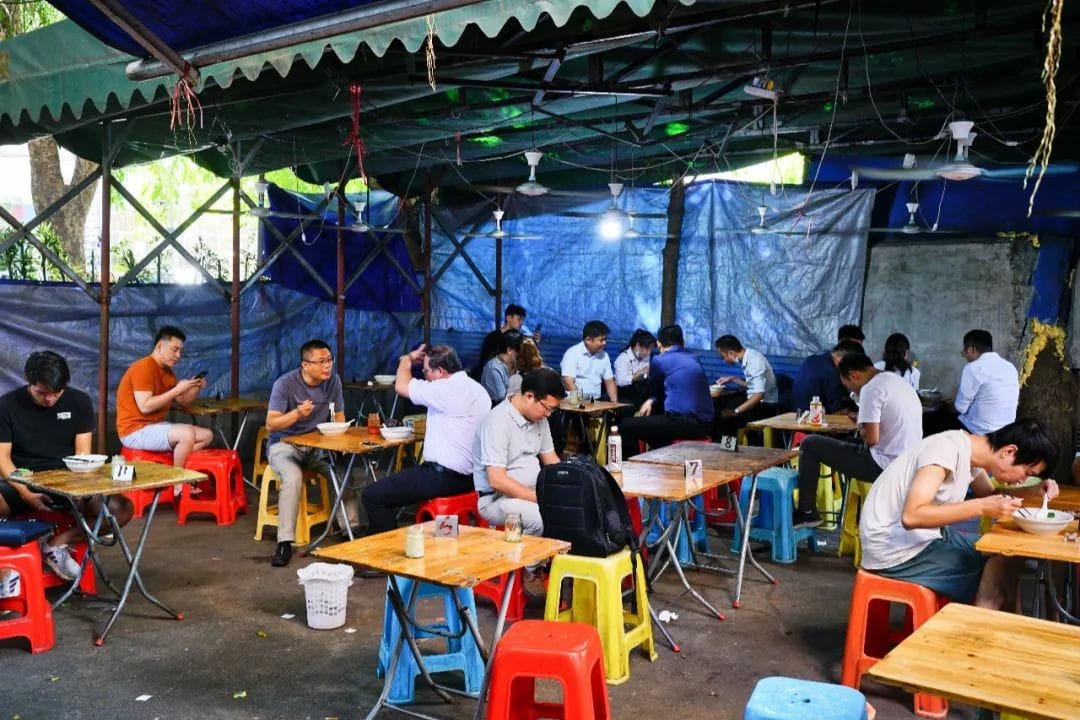
Baoluo noodles are a specialty of the neighboring Wenchang. The rice noodles are the thickest, resembling “Hainan-style udon,” and the broth has a sweet flavor, but the addition of pickled vegetables makes it very refreshing and appetizing.
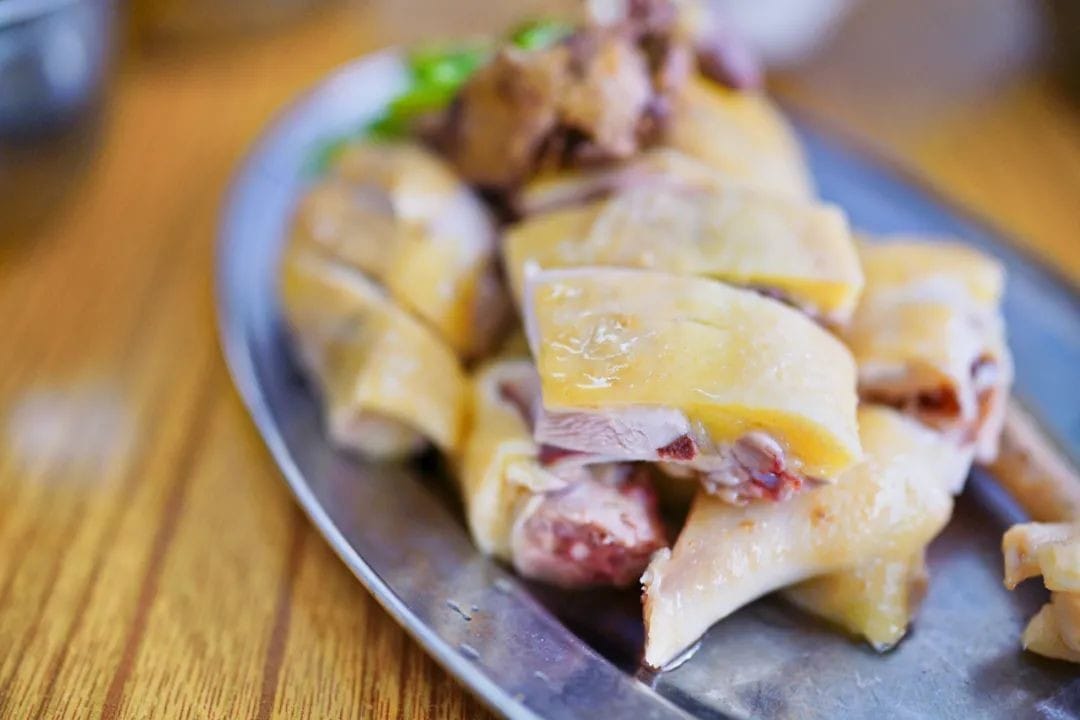
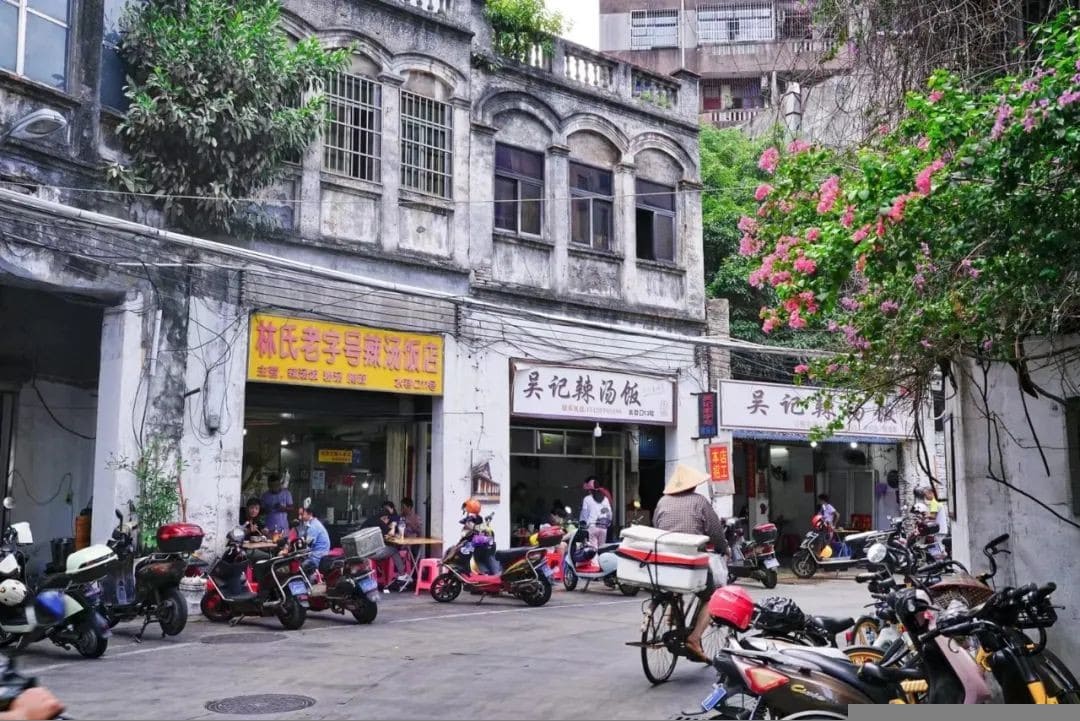
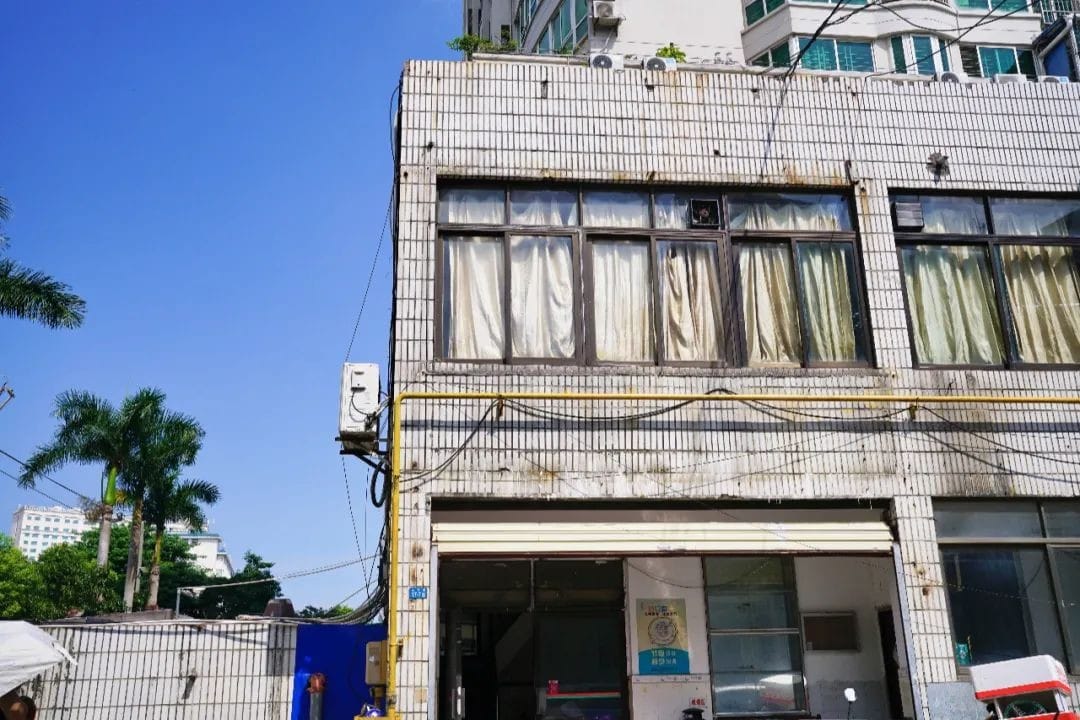
Tongli is a well-known small shop in the Guomao area, where there are many breakfast places, but Tongli’s business is the most bustling.
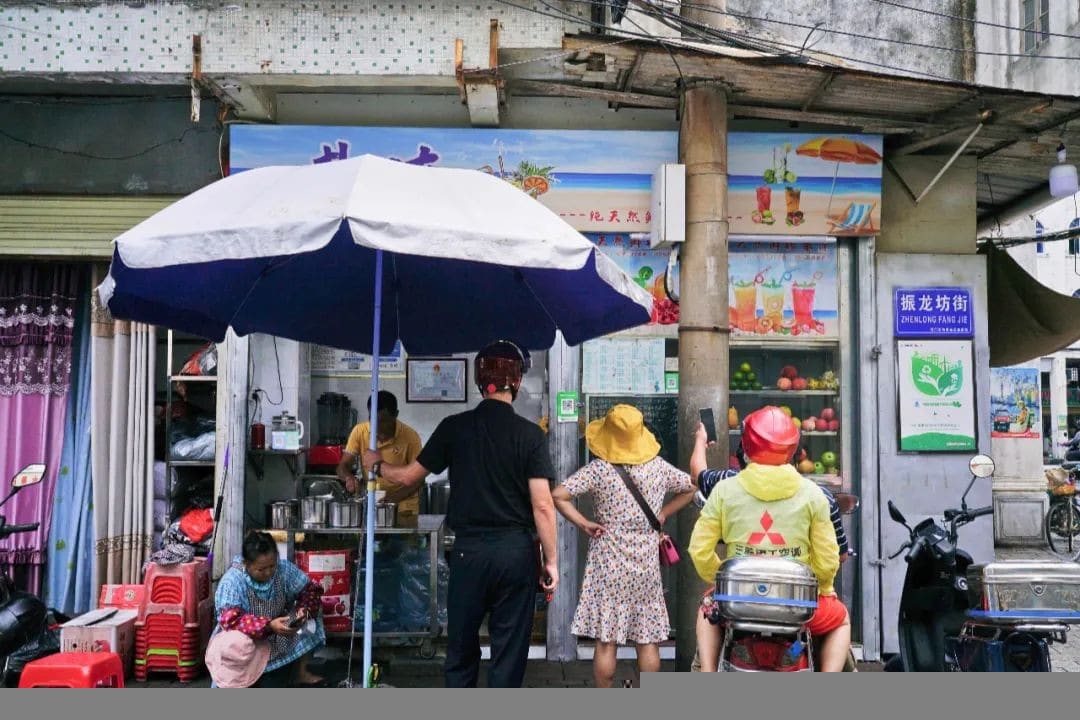
The front hall looks small, but the back courtyard has a spacious tent, filled with office workers who come to satisfy their cravings before starting work.
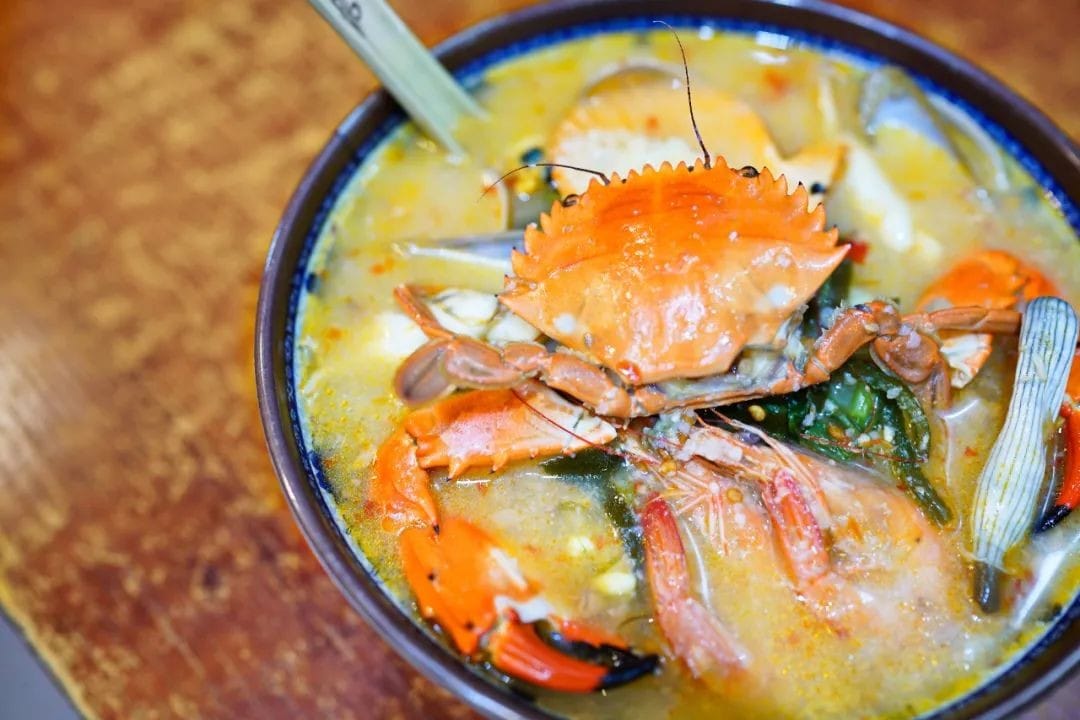
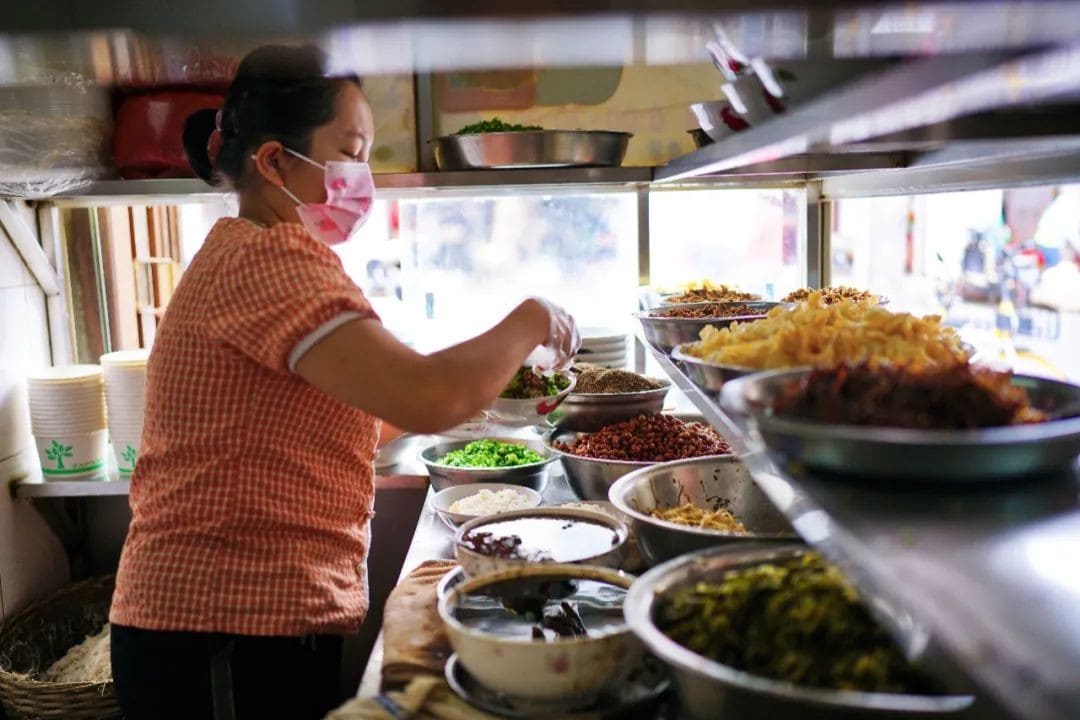
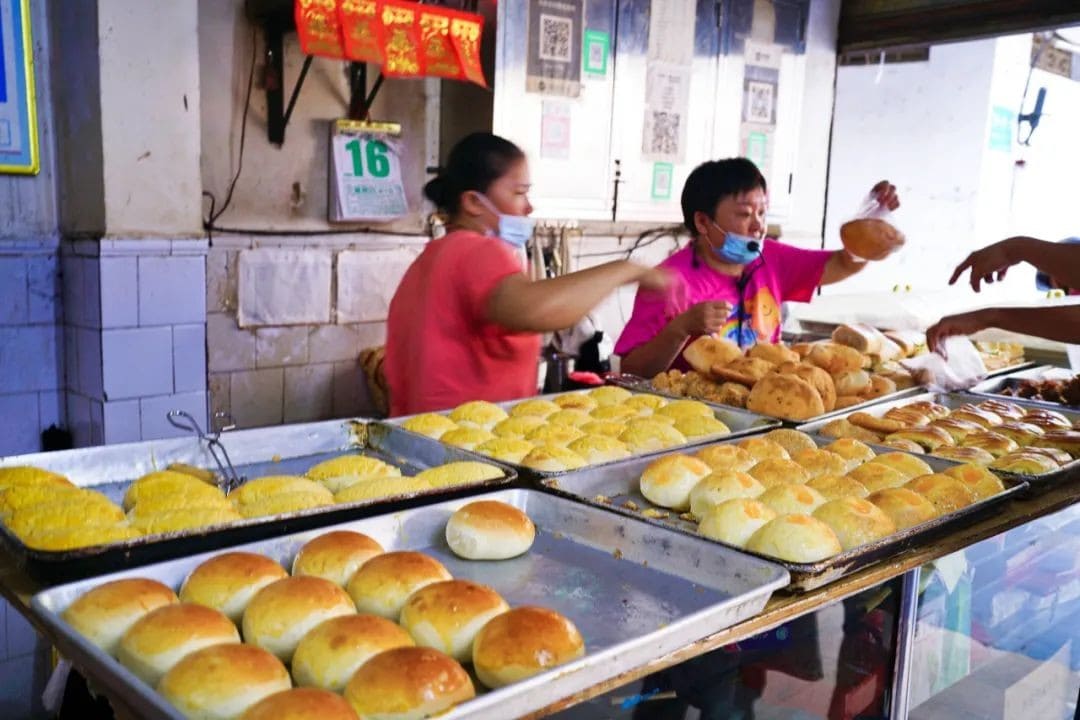
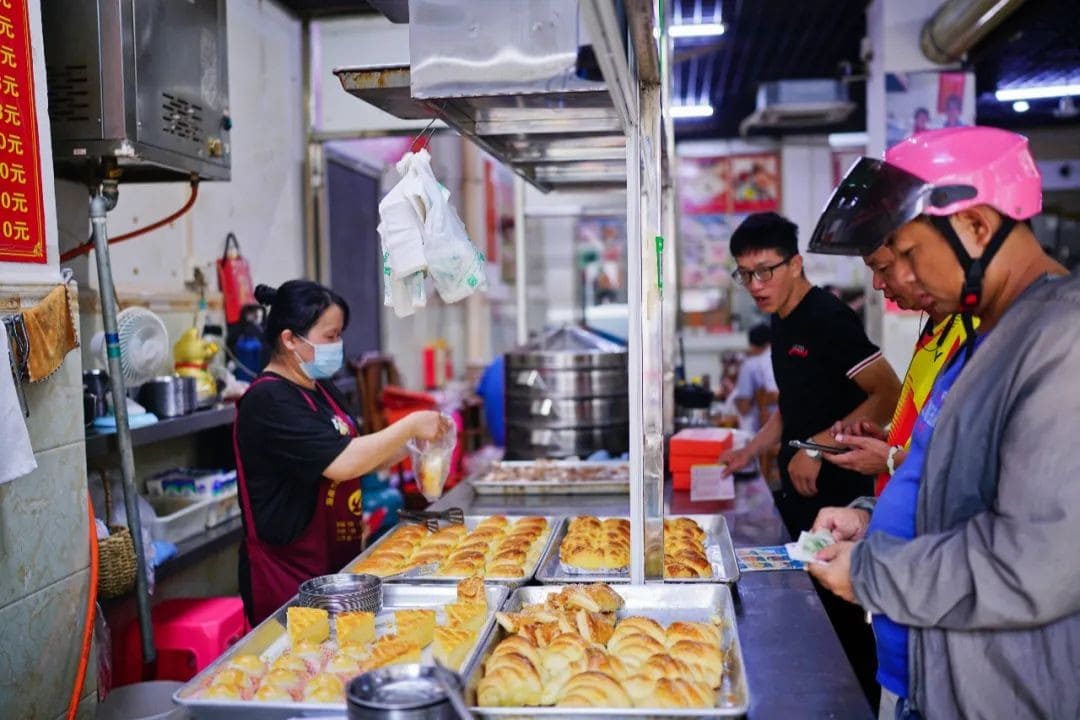
Tongli doesn’t have a menu, but as soon as you sit down, someone will come to take your order, asking about your preferences, placing the order, and serving the noodles—all processes are efficient and quick. It’s no wonder they prioritize efficiency, making it a top-notch breakfast shop with excellent service.
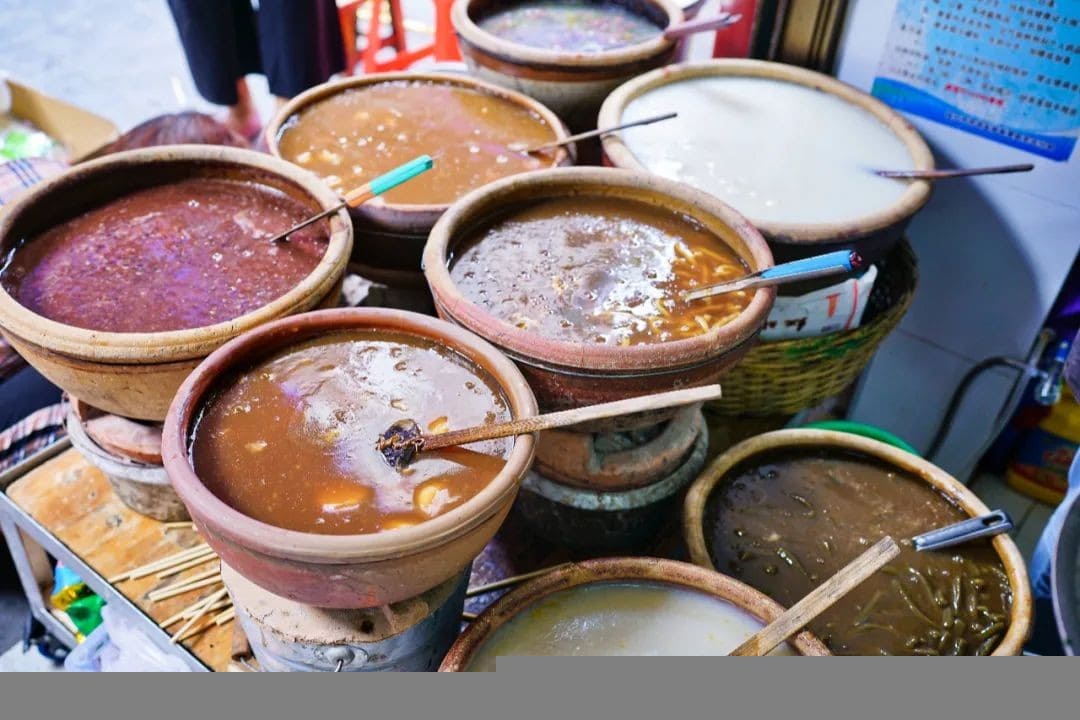
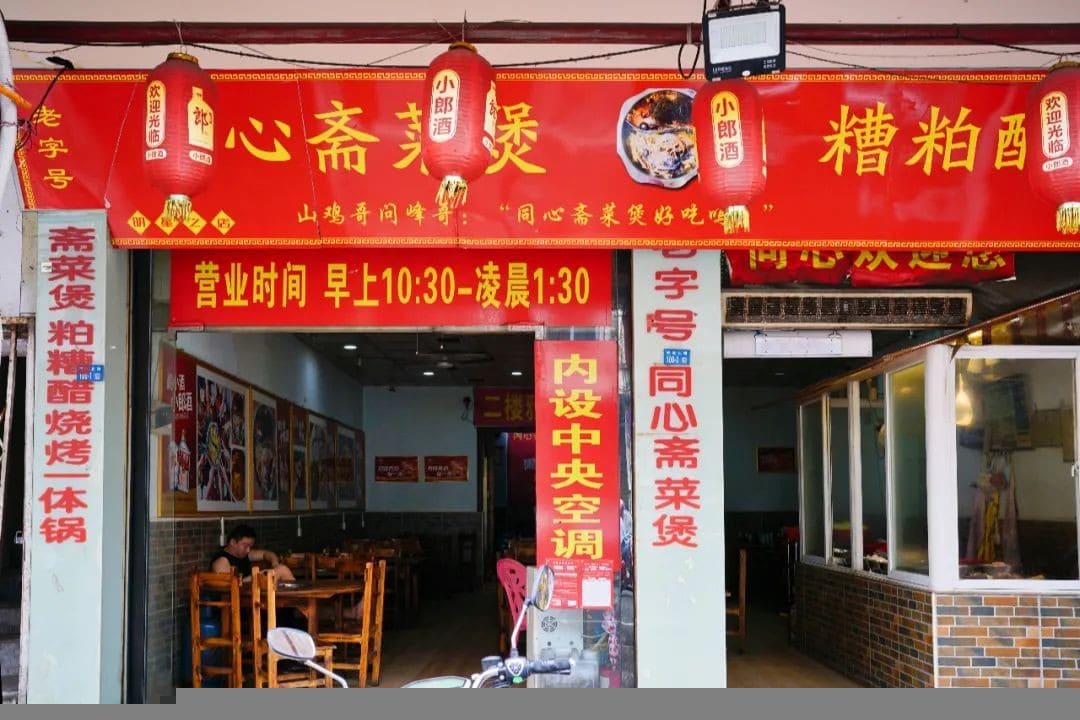
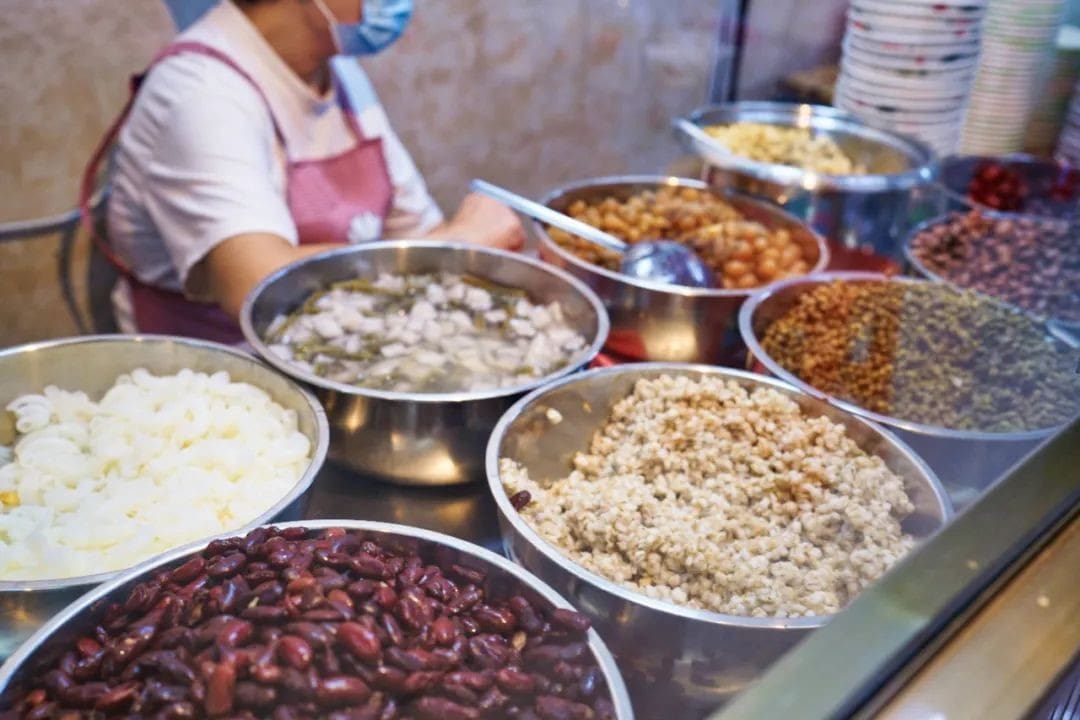
Tongli’s braising sauce is relatively refreshing among marinated noodles, and the beef on top is particularly delicious, with a perfect balance of lean and fatty parts, becoming more flavorful with each chew. When you’re almost done, pour the conch soup into the noodles to turn them into soup noodles, satisfying your taste buds from every angle.
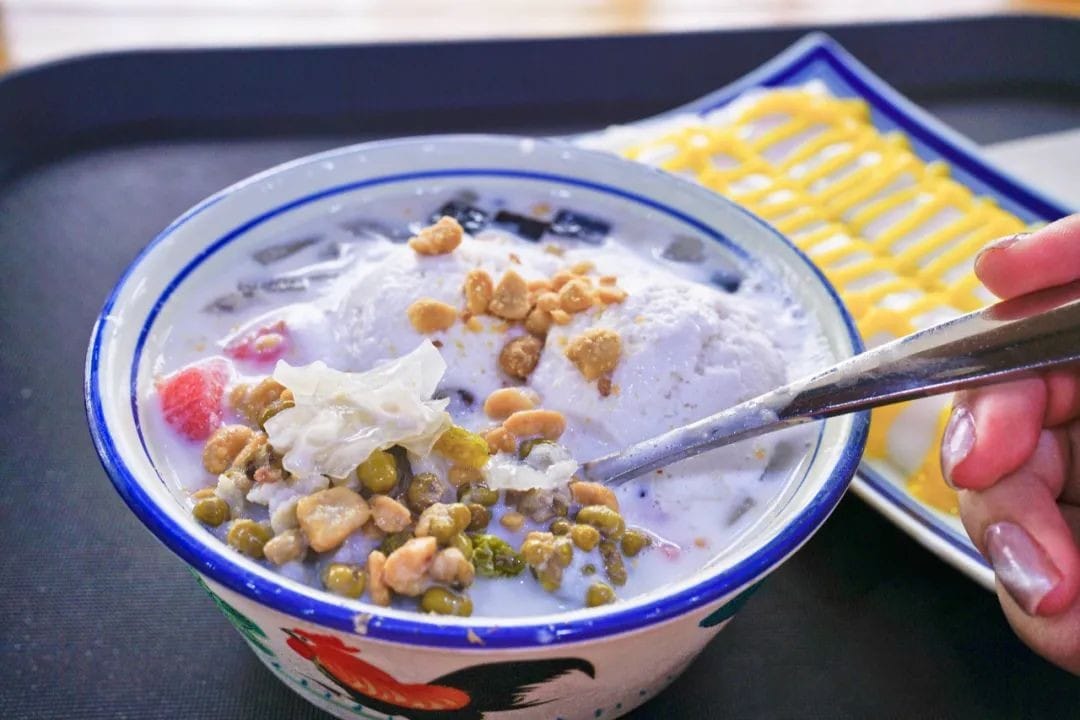
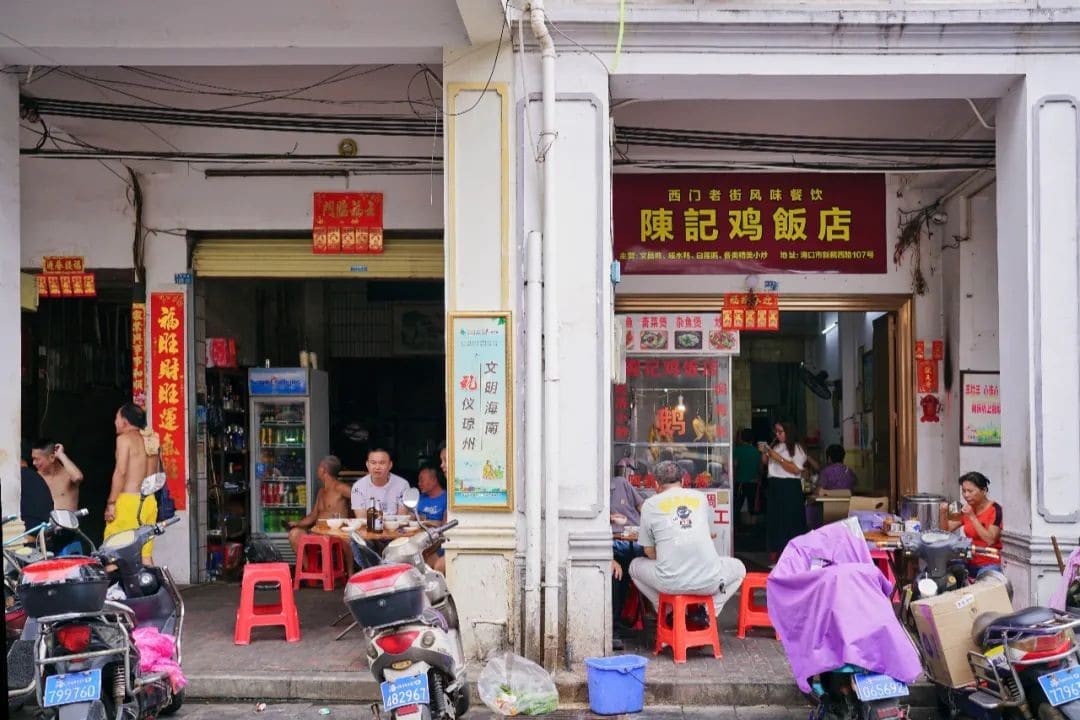
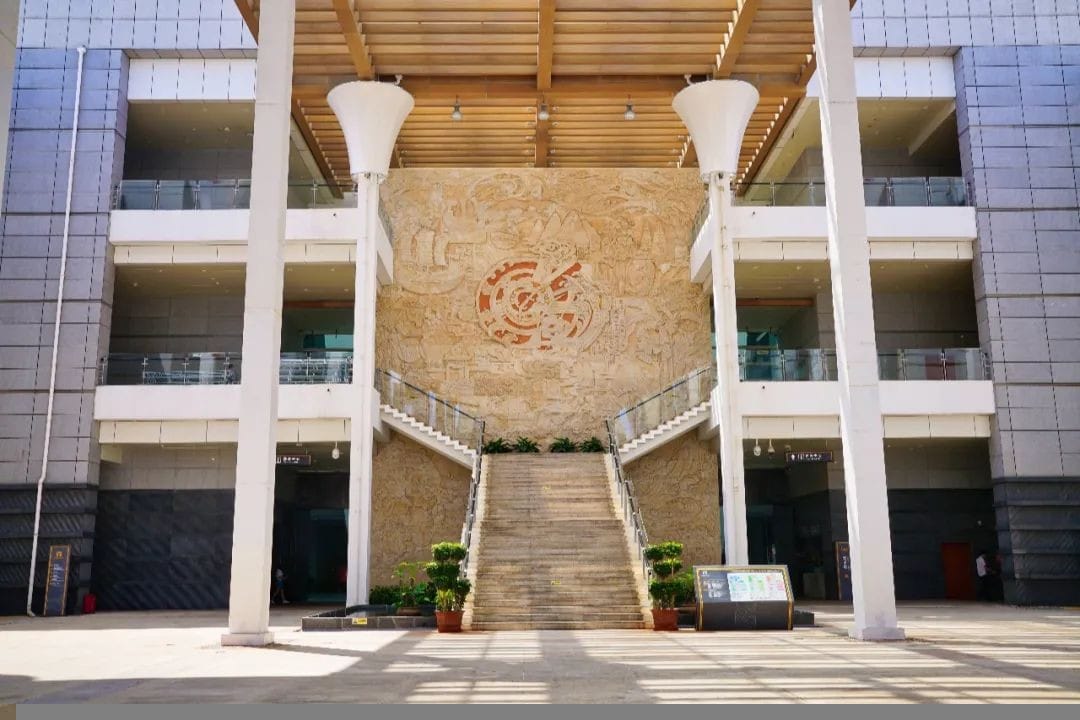
In addition to marinated noodles, Tongli’s marinated beef brisket noodles are very famous, and many people order them.

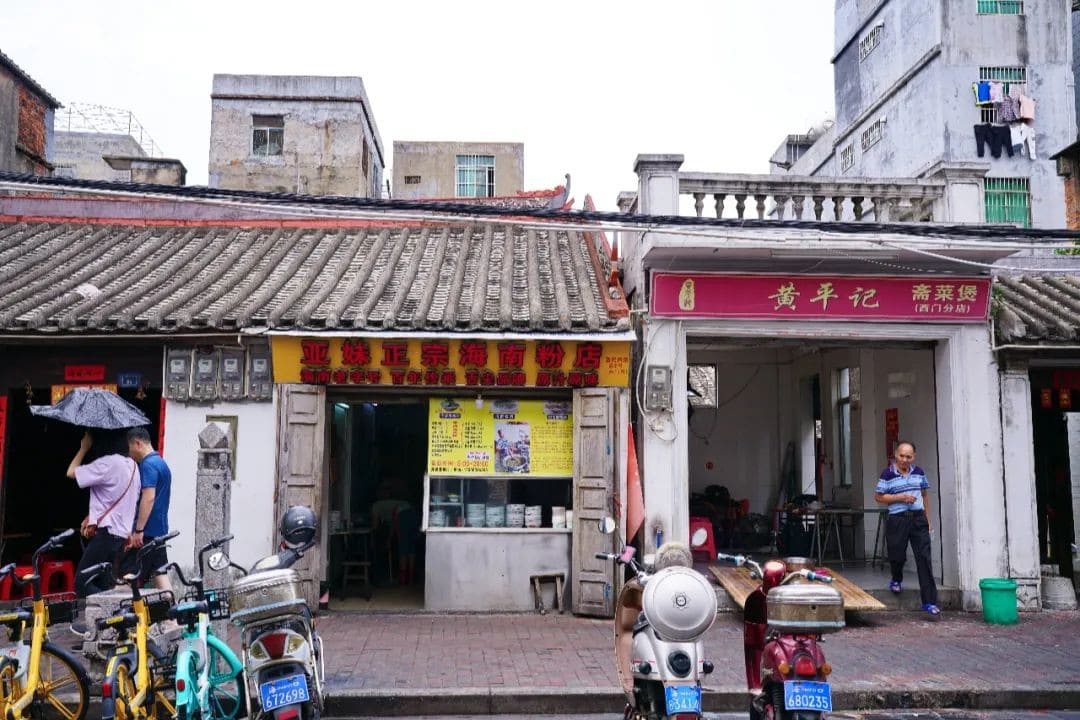
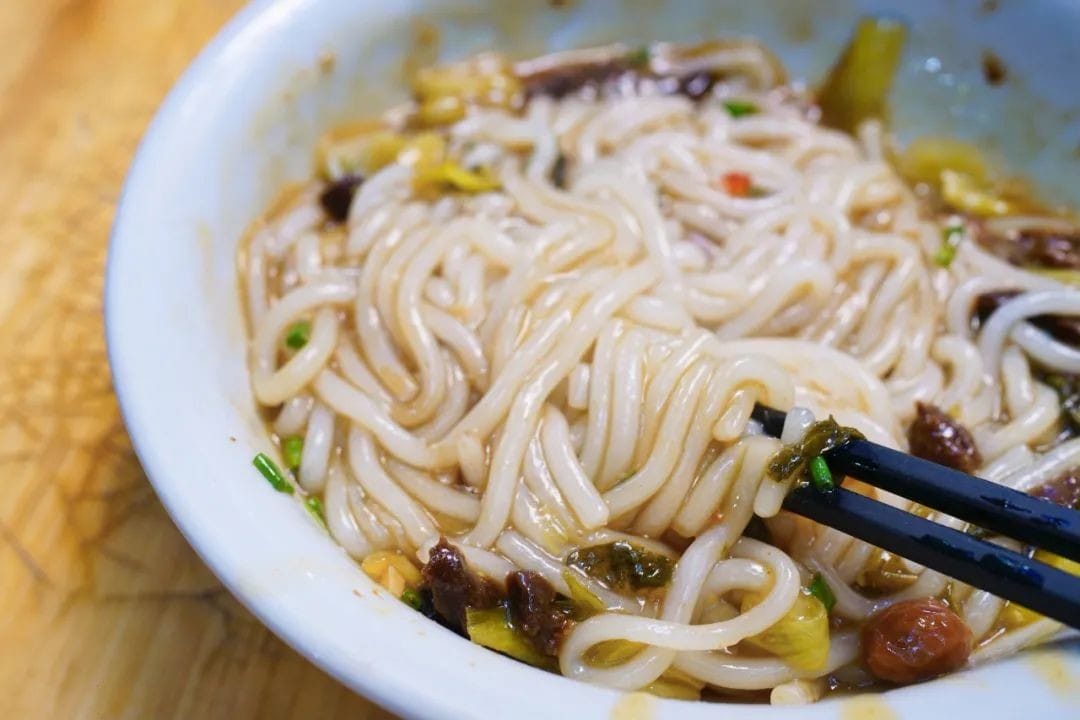
Ling Shui Lao Guo Ma Sour Noodle Shop
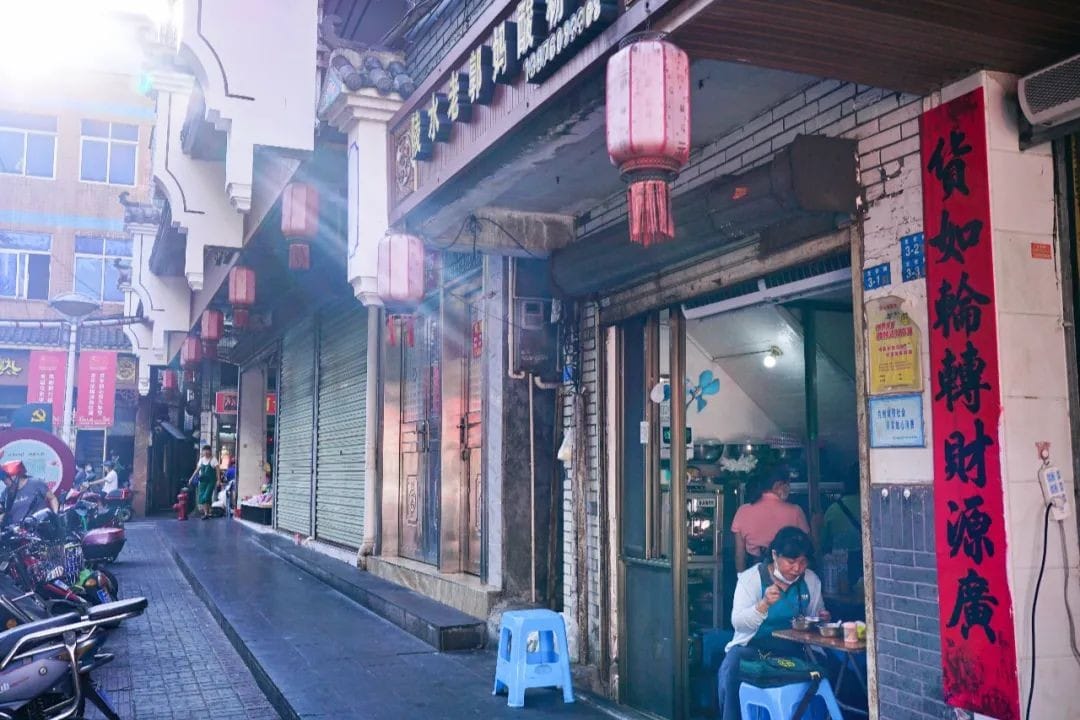
📍130 Longshepo Market, Longshe Road, Meilan District
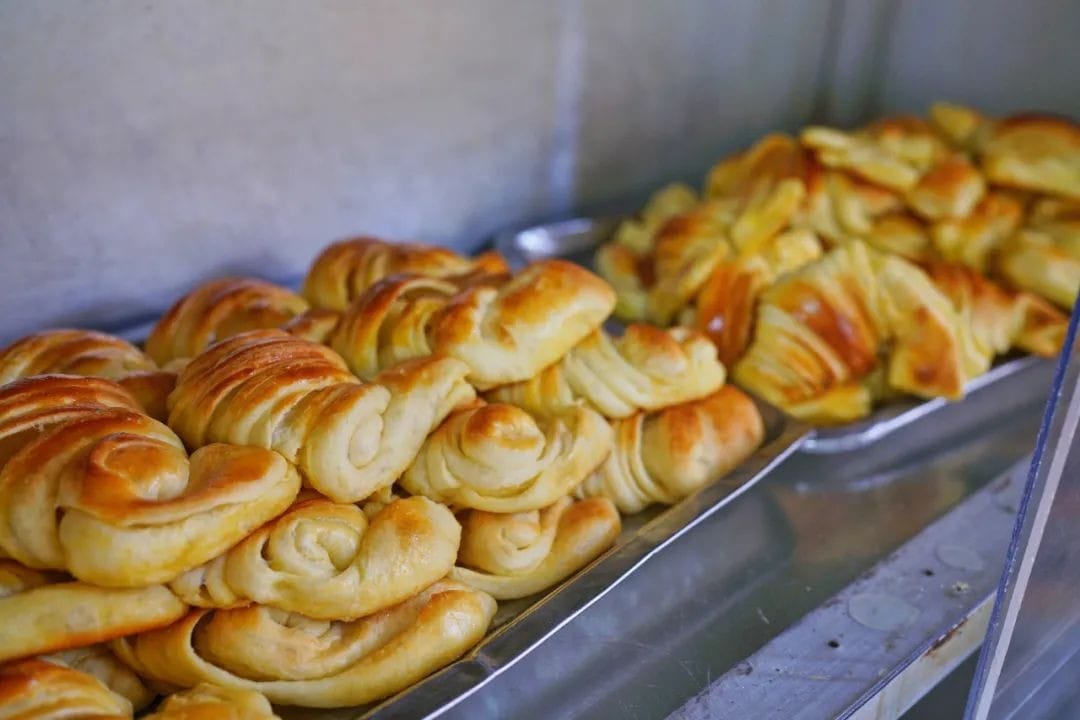
💰¥10/person
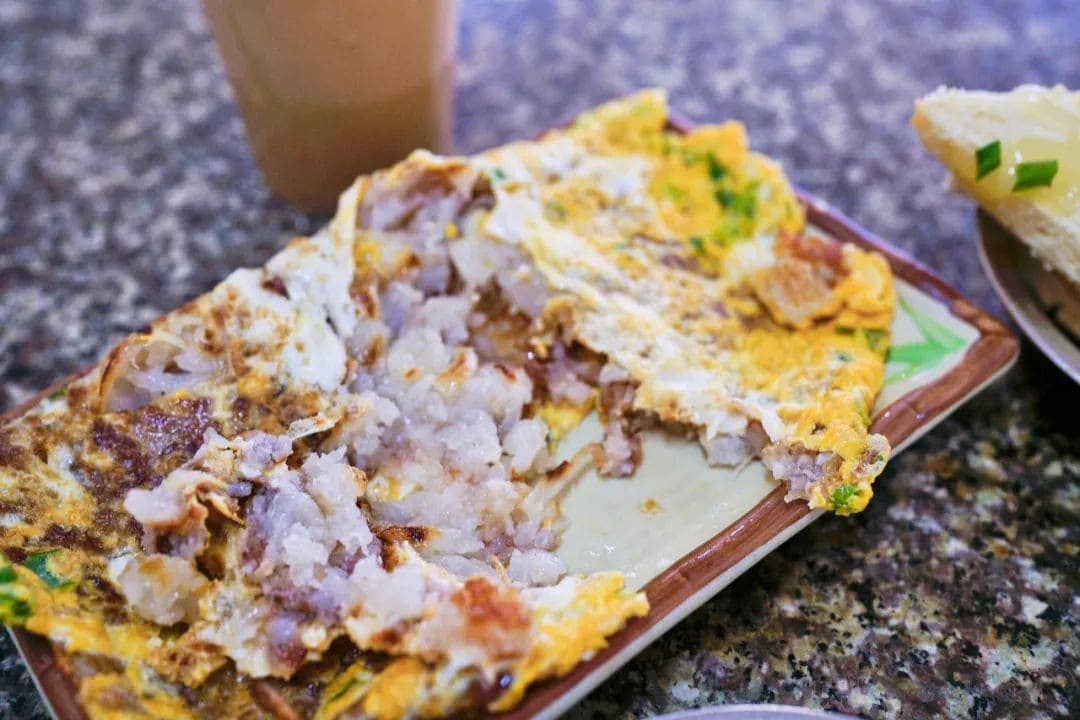
Compared to Hainan noodles and Baoluo noodles, shops that make Ling Shui sour noodles are harder to find in Haikou.
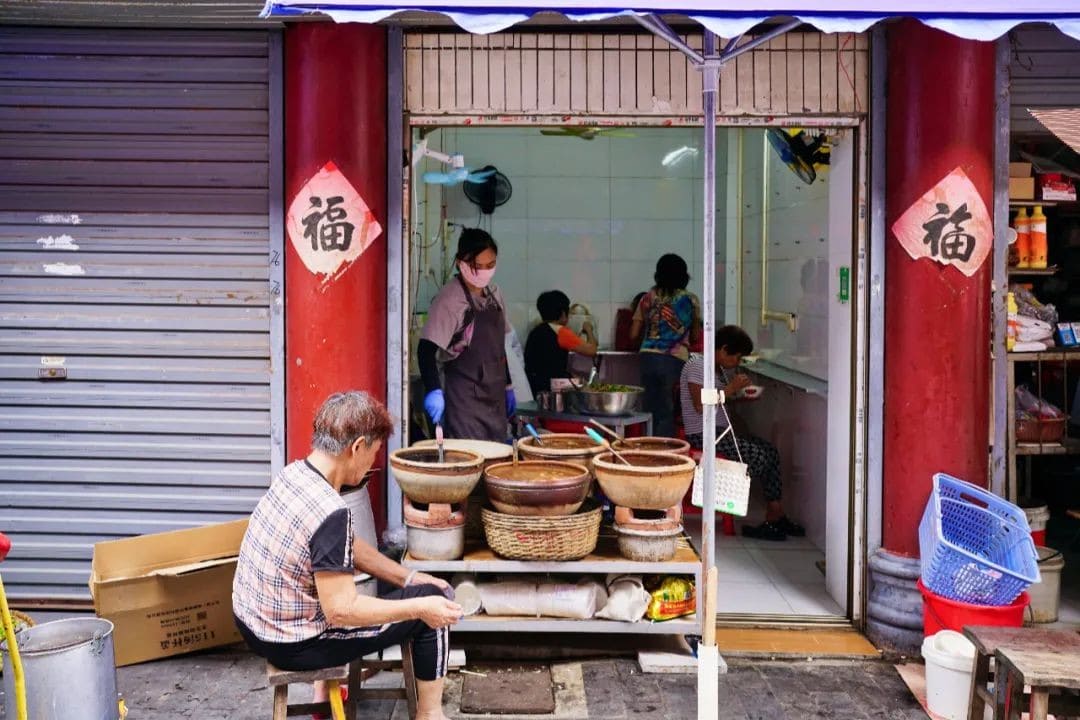
The Lao Guo Ma shop I visited is next to Longshepo Market, surrounded by many, and mostly frequented by neighborhood residents, making it a very lively area.
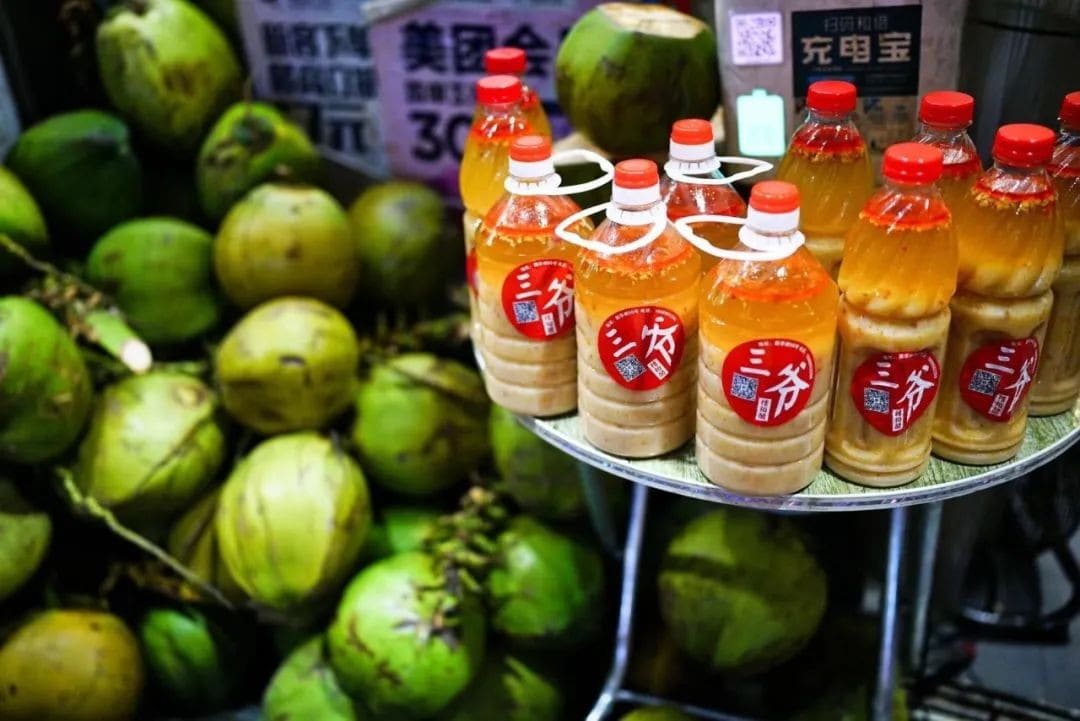
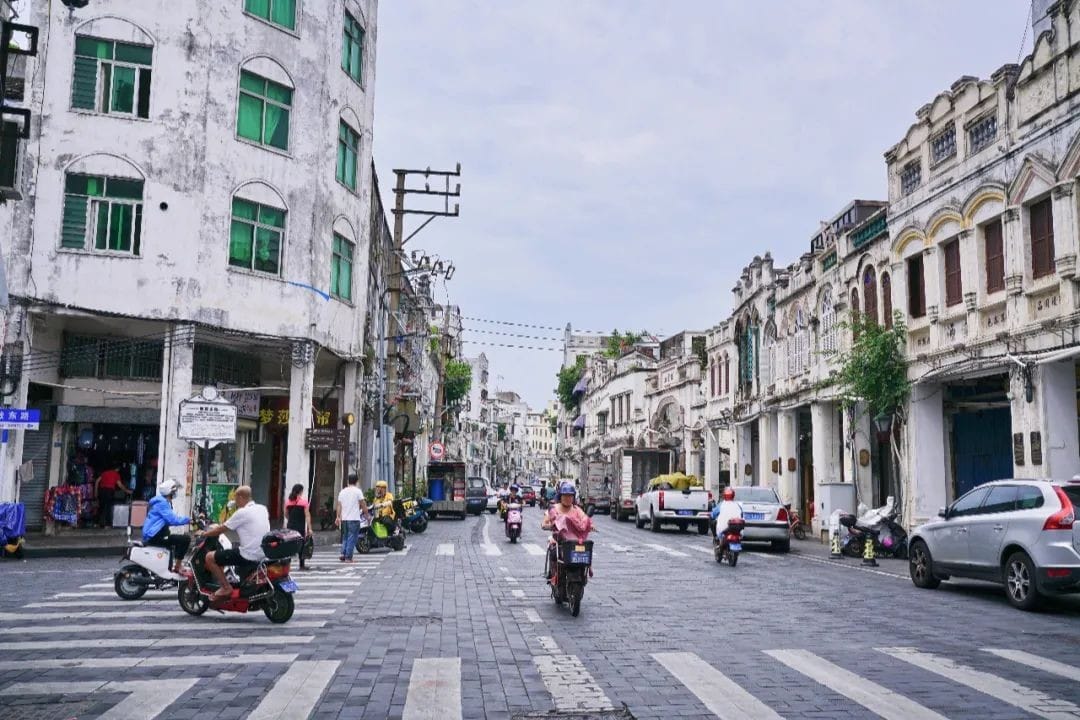
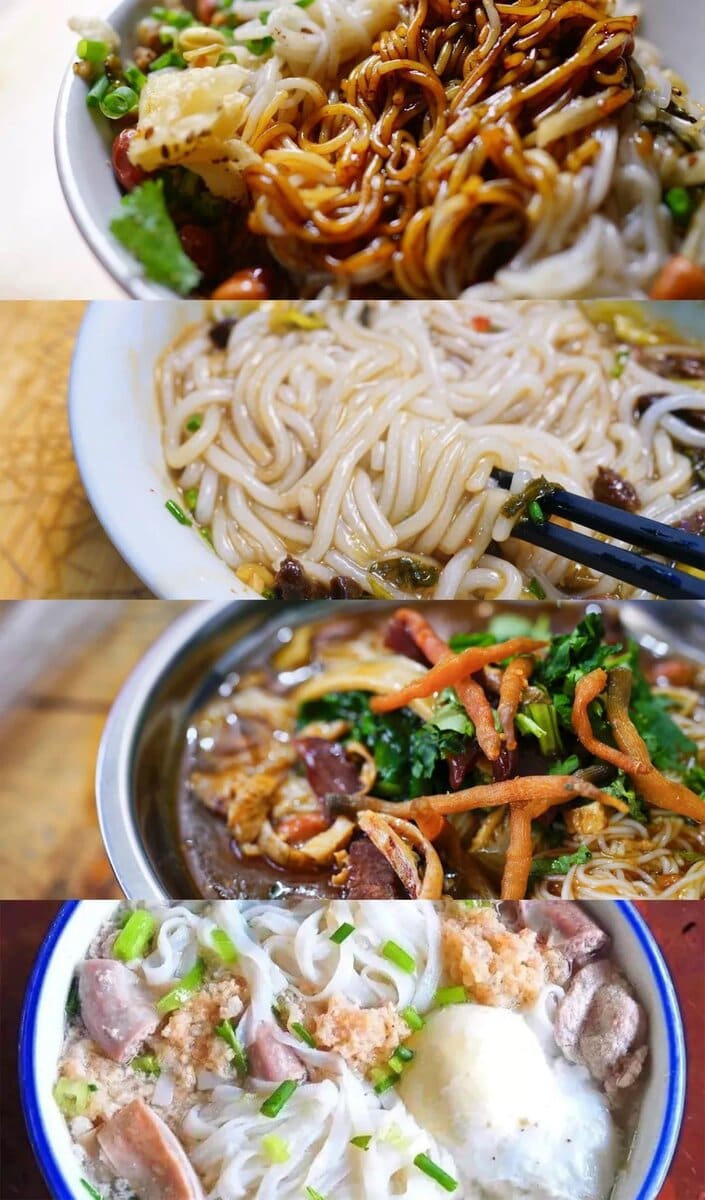
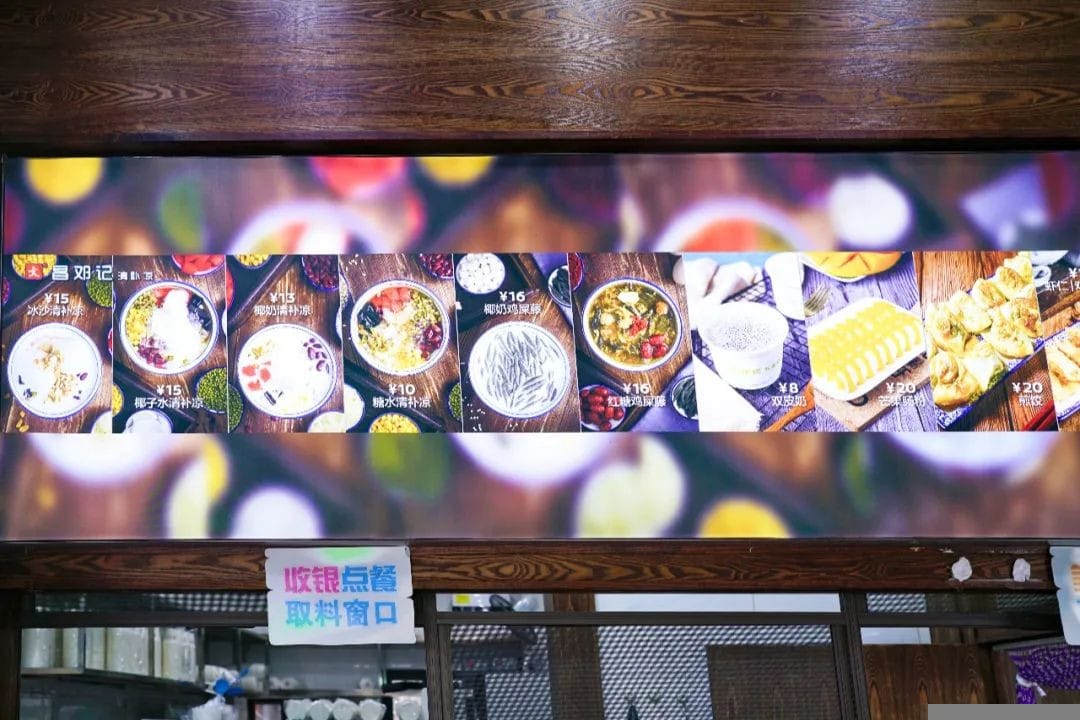
The braising sauce for the sour noodles is sweet and sour, but compared to the sour soup in Guizhou, it’s quite mild.
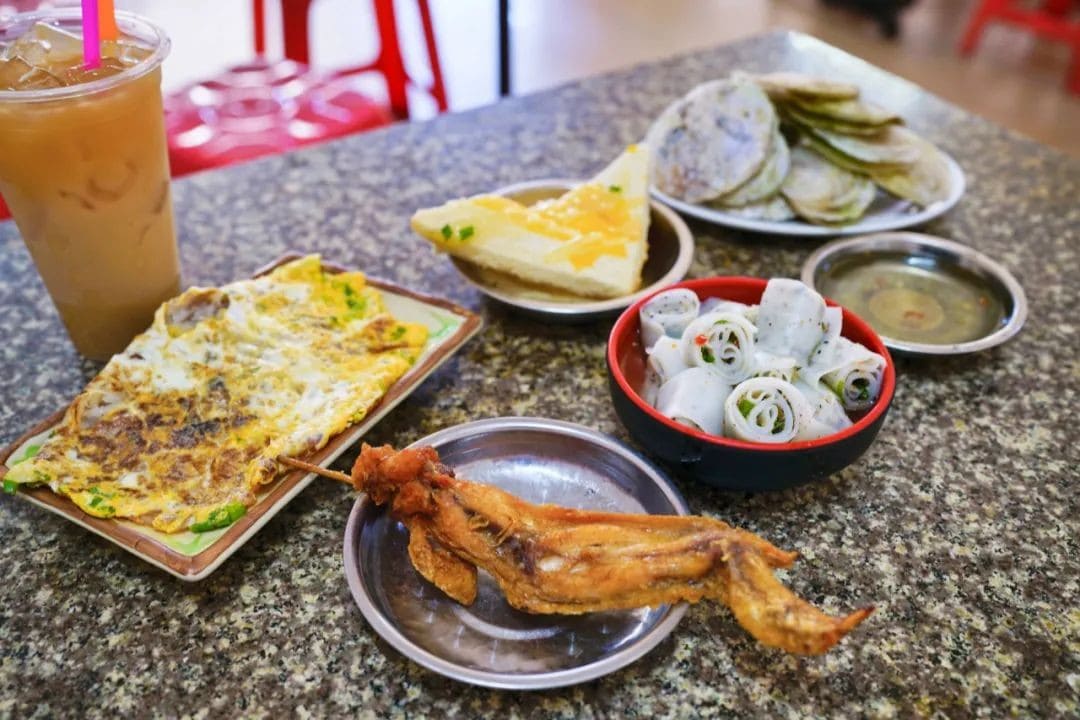
I enjoy adding a spoonful of yellow chili, a specialty from Hainan, which enhances the flavor and provides a spicy kick that wakes up the senses.
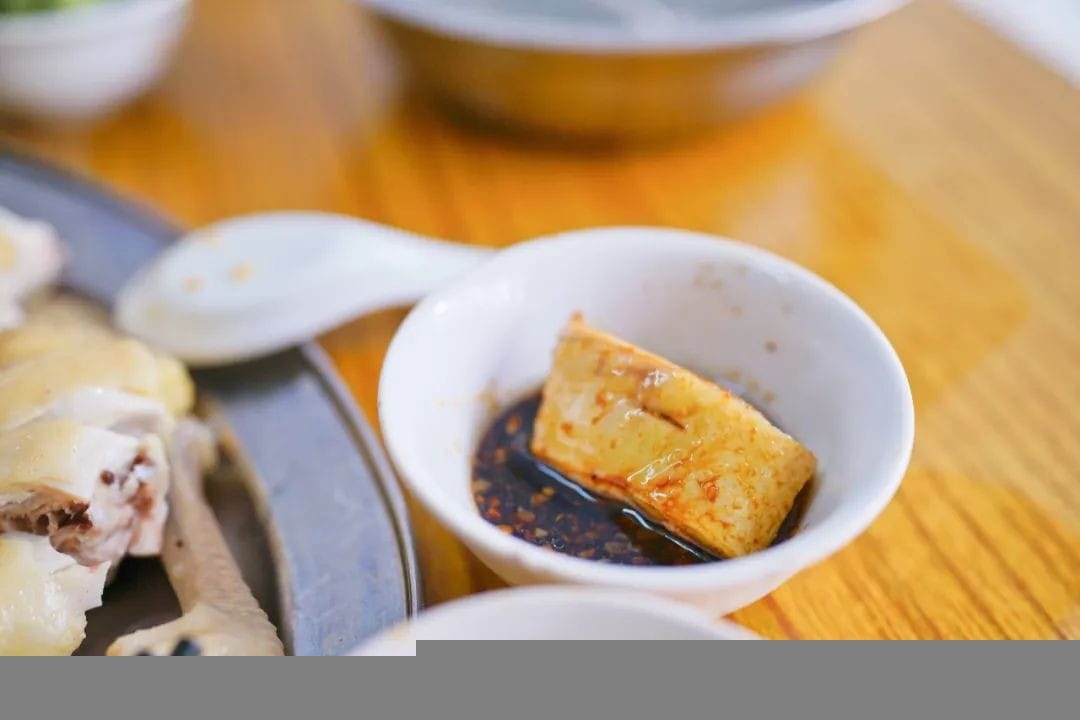
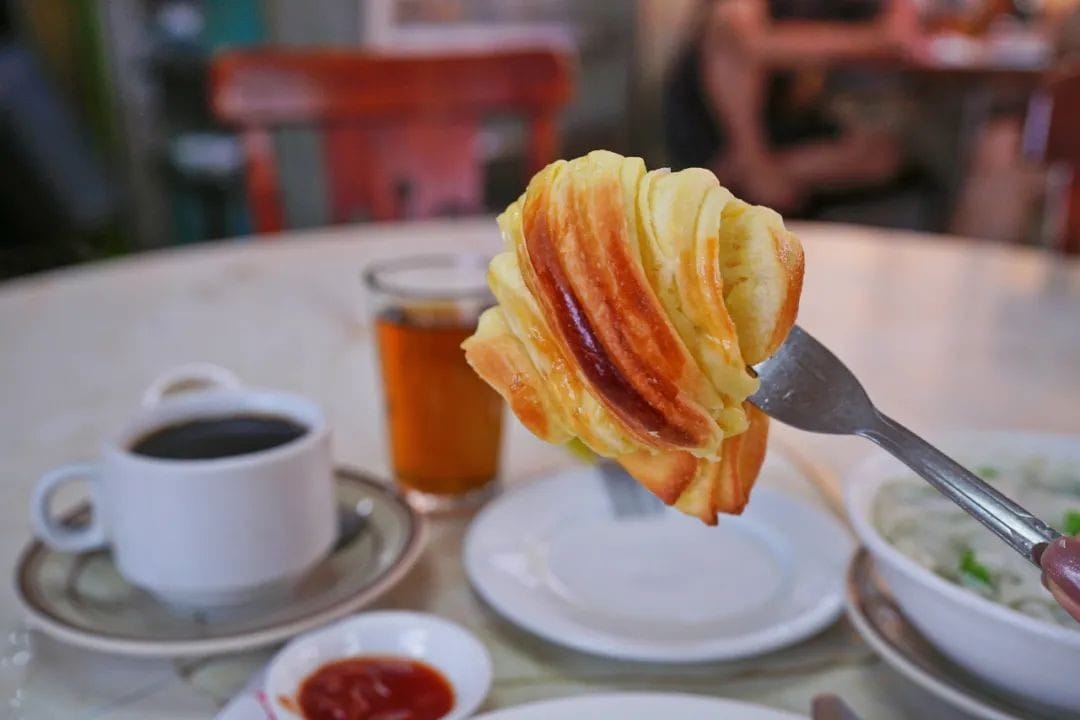
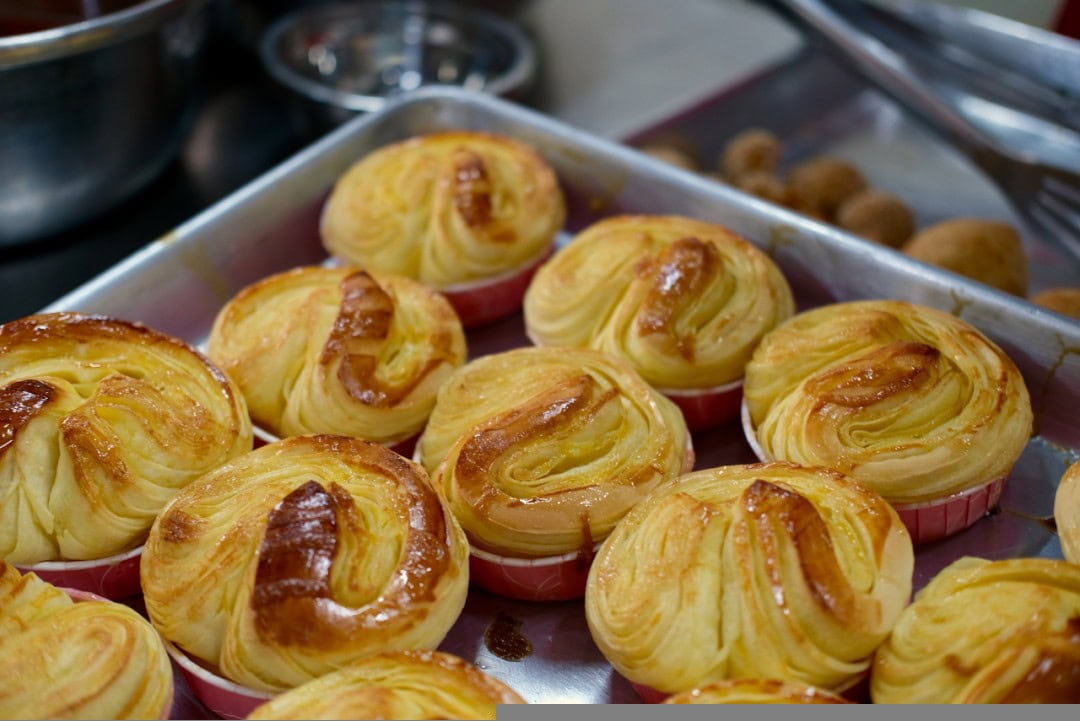
The rice noodles are as fine as Hainan noodles, but the toppings are much more abundant than the previous two dishes.
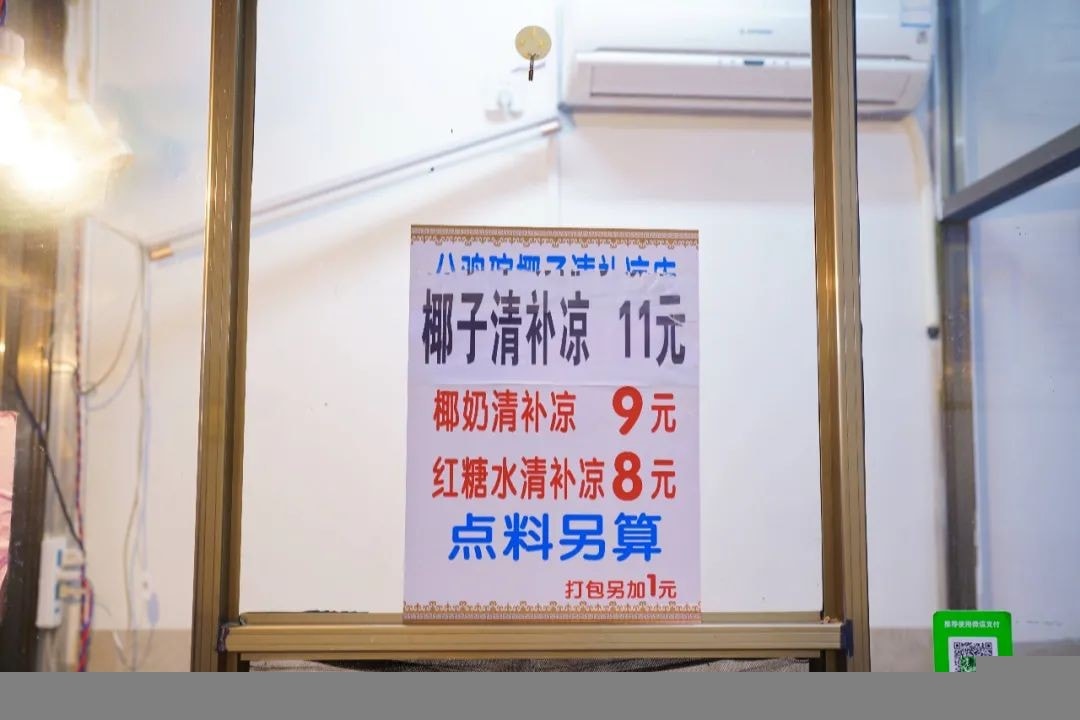
Not only are there beef and fish cakes, but also dried sandworms. Although many people can’t handle them, not adding them feels like a Guizhou dish without fishwort, always leaving a sense of missing something essential.
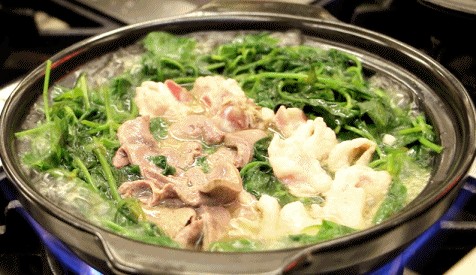
Having tried three of the four famous Hainan rice noodles, the remaining one, Wanning’s Hou’an noodles, will have to wait for next time~

11:30 A.M.
A master at creating diverse rice dishes
Fei Po Lan Chicken Rice
📍No. 32 Xinhua South Road, Longhua District
💰¥50/person
The saying “no chicken, no feast” probably holds true in Hainan as well.
There are many “chicken rice restaurants” in Haikou, and Fei Po Lan is particularly famous. Although some regulars complain about the declining quality, the restaurant remains bustling with locals constantly coming to take away food.
They don’t serve fast food; they only sell chicken.
The chickens are at least four months old, cooked to about 70-80% doneness, and the key step is to let them cool. After ordering, the staff will cut the chicken into bite-sized pieces, and chicken accessories are given out until they run out.
The texture of Hainan chicken is not overly soft, quite different from the “Xiaoshaoxing boiled chicken” I’m used to.
The skin is crispy, and the chicken fat is just right, not too oily. I particularly like the two dipping sauces for the chicken, one a sweet and sour sauce and the other a garlic water, making me crave a bite of chicken oil rice.
Fei Po Lan can be considered a normal level among chicken rice restaurants; it doesn’t offer a stunning experience, but the price-performance ratio is quite high. Half a chicken costs about 50-60 yuan, and the portion is quite generous.
Yao Ji Spicy Soup Rice Restaurant
📍No. 21-7 Shui Xiang Kou, Meilan District
💰¥20/person
The spiciness of the spicy soup rice doesn’t come from chili but from another Hainan specialty—white pepper. In the perennially summer-like weather of Hainan Island, spicy soup rice is the universal key to opening up one’s appetite.
The most authentic way to enjoy Hainan’s spicy soup rice is with two pieces of cured sausage and a fried egg. The rice can be substituted with rice noodles, and the side dishes in the soup rice are usually hearty and filling meats like beef brisket and pork offal.
The row of spicy soup rice shops at Shui Xiang Kou is a sight in Haikou’s old streets. With limited appetite, I didn’t compare the flavors of each shop, but since they have been “competing” for so many years, their levels are likely to be evenly matched.
2:00 P.M.
A 5 yuan cup of dad tea can last you the whole afternoon
Alley Tea Shop
📍54 Wenming 1st Road, Meilan District
💰¥40/person
After returning from Hainan, I counted on my fingers and found that I had eaten at 5 dad tea shops in just 5 days. I must be a seasoned enthusiast of dad tea.
Dad tea is a unique social activity for Hainanese people. Order a cup of tea and you can sit from morning till night.
Like Cantonese dim sum, the highlight of dad tea is also in the “dim sum” rather than the tea.
So, there’s no special trick to choosing a dad tea shop; the more varieties of dim sum, the better. For example, this Alley Tea Shop is famous for its wide selection of dim sum.
All the bread is freshly baked and sold upstairs, quite different from the popular European and Japanese styles, with a taste that evokes a nostalgic feeling, as if you’re about to go to school after taking a bite.
Sandwiches, radish cakes, and fried chicken wings are must-haves, while rolls and fermented rice vinegar are just average. There’s also a mysterious shellfish that leaves one puzzled.
Eating dad tea at the Alley Tea Shop is like attending a continuous feast. Each time a new product is “launched,” it makes you itch to try it, so don’t be greedy and take too much at once! (Painful lesson)
Singapore Restaurant
📍Inside the Overseas Chinese Building, 17 Datong Road, Longhua District
💰¥30/person
While the Alley Tea Shop is known for its variety of dim sum, the Singapore Restaurant offers the best atmosphere for dad tea.
Their reputation ranks among the top in Haikou’s old shops. The building looks abandoned, with the sign barely visible from years of exposure to the elements, but inside it’s bustling with noise. Arriving late means you have to compete with the “Ah VO Bei Die” for a seat.
The Singapore Restaurant was originally opened by overseas Chinese, so the flavors range from Hong Kong, American, to Singaporean styles. The set meal system saves me from indecision and is quite economical. (Set A is the most popular)
The rice noodles and ham with fried eggs were quite ordinary, but the croissants were truly, truly delicious!
The croissants are made to order, freshly baked and steaming with a rich buttery aroma. When torn apart, they reveal layers of complexity, far exceeding the quality of a small shop.
The coffee, brewed fresh, was the last to arrive. It had a very typical Southeast Asian flavor—coffee beans from Xinglong, paired with condensed milk. The coffee was pitch black and bitter, but with the condensed milk, it became incredibly smooth.
Although it lacked the inherent flavors of specialty coffee beans, it was very “Hainan” in taste.
**Hengxingfa Tea Shop**
📍16-17 Longxing Lane, Bo’ai South, Meilan District
💰¥40/person
In terms of fame, Hengxingfa, which has been featured on “Breakfast China,” is actually more well-known. It’s also very close to the Qilou buildings, making it a perfect spot to stroll in for a cup of “dad tea.”
Hengxingfa’s selection of dim sum is textbook-worthy. Compared to small alley tea shops, it offers a wider variety of steamed dishes. Items like char siu buns and deep-fried French toast are synonymous with Hengxingfa’s.
After eating at Hengxingfa, I confirmed that even in Haikou, a city known for its, it’s worth dedicating precious stomach space to this place.
**4:00 P.M.**
Grabbing dessert whenever there’s a gap
**Yan Zhi**
📍87 Bo’ai North Road, Meilan District
💰¥10/person
Haikou is probably one of the few cities with a low density of milk tea shops, as locals here are particularly fond of “old salt beverages.”
“Old salt” refers to sea salt that has been stored for a long time, a unique salt variety in Hainan with a wide range of uses.
Besides being used in salt-baked chicken, old salt beverages are most commonly seen all over Haikou.
In Hainan, any fruit can be paired with old salt.
The menu changes with the seasons, featuring local Hainan fruits. For example, yellow skin fruit mixed with old salt could fetch a high price in a milk tea shop; old salt loquats and old salt kumquats are not only delicious but also refreshing and thirst-quenching. However, my favorite is the refreshing old salt lemon water.
This place is particularly popular, and I think it owes much of its success to its catchy name. After trying a few other places, I found that the flavors were quite similar.
**West Heaven Temple Sweet Soup**
📍West Heaven Temple, Yixing Street, Longhua District
💰¥15/person
Although I’m not particularly fond of these “filling” sweet soups, for Hainanese people, rice porridge sweet soup is the most comforting afternoon tea in the Qiong style.
Around the West Heaven Temple, this sweet soup shop run by Auntie VO is the most popular. It offers almost all varieties of traditional Haikou sweet soups.
For those who like something sweet, I recommend sweet potato milk, chicken poop vine, and red bean soup. For those who prefer savory, you can try the salty sweet potato milk or pickled Hainan noodles.
The texture of the salty sweet potato milk is quite magical; it tastes like a soup dumpling without filling, but with added peanuts, garlic oil, and shrimp paste. The dessert has a garlic aroma, which I didn’t quite get used to, but it was a new experience.
**7:00 P.M.**
A bowl that blends mountain and sea flavors
**San Ye Fermented Rice Vinegar Soup**
📍No. 59 Xinhua South Road, Longhua District
💰¥25/person
Wenchang people deserve more praise! Using the leftover vinegar juice from brewing wine as the soup base, this dish has a peculiar sour and stinky flavor, which can be considered the “Hainan version of Luosifen” (fermented rice noodle). However, after trying it, I quickly fell in love.
The toppings for the fermented rice vinegar soup can be divided into seafood and beef offal. I decisively chose the former.
Crab, sandworm, sand shrimp, scallop, sea clam… all kinds of seafood are included in one bowl, and the portion is generous. The toppings are practically limitless.
I visited San Ye purely out of curiosity due to the crowd, and I was pleasantly surprised by how clean the seafood was handled. There was no sand in any of the shellfish.
The soup base is both sour and spicy, but it doesn’t overpower the freshness of the seafood. The bean sprouts and seaweed at the bottom are flavorful and crispy, so much so that I finished the entire soup!
**Tongxin Vegetarian Pot**
📍No. 100-2 Bo’ai North Road, Longhua District
💰¥80/person
Vegetarian Hot Pot is also a specialty of Hainan. It originated from the tradition of “worshipping gods and eating vegetarian food” during festivals. Hainanese people never compromise on their enjoyment, using over ten types of vegetables to cook a pot that surprisingly tastes very good.
Now that living conditions have improved, vegetables have become side dishes. The main event is choosing beef brisket, beef offal, pork ribs, pork tail, and other meat dishes to cook in the vegetarian hot pot. To enjoy the vegetarian hot pot, you need to dip it in a special sauce, which makes it delicious with just a quick roll.
Moreover, Tongxin offers a yin-yang pot with both vegetarian hot pot and fermented rice soup, which is absolutely to my liking!
Image: @de
9:00 P.M.
Refreshing Herbal Jelly to Forget the Heat
Coconut Herbal Jelly in Rooster Bowl
📍Longhua District, Xinhua South Road No. 2-2
💰¥10/person
While late-night snacks in other cities might be barbecue or crayfish, in Haikou, nothing beats a bowl of herbal jelly.
Haikou’s summer can melt a person, and I survive each day with herbal jelly. After trying many places, the best is still the Rooster Bowl.
Their menu only has herbal jelly, available in coconut water, coconut milk, and brown sugar. Personally, I recommend the coconut water version.
The sweet coconut water is served chilled, completely additive-free and naturally sweet.
Combined with their handmade chicken gizzard vine, winter melon, coconut meat, Job’s tears, longan, lotus seeds, and other ingredients filling half the bowl, one bowl is never enough for me, and two bowls are never too many!
Dengji Herbal Jelly
📍Meilan District, Longshe Road, Longshepo Market No. 130
💰¥10/person
Dengji Herbal Jelly was recommended by a taxi driver. After dropping me off, he actually turned off the engine and ordered a bowl for himself?
Despite being Haikou’s top-ranked dessert shop, it’s also the first choice for locals when it comes to herbal jelly.
The preparation of the rooster bowl has a feel of a family workshop, while the products from Deng’s are more like those from a chain store, standardized.
Deng’s offers four main types of Qingbu Liang: coconut, coconut milk, ice shavings, and sugar water. Additionally, there are some snacks that are quite satisfying and comforting.
As usual, a plan for digestion after the meal is arranged.
Haikou city proper is not large, making it very suitable for strolling. Four places are recommended.
① **Qilou Old Street**
Qilou is a landmark architectural style in Haikou, especially the area enclosed by Changdi Road, Zhongshan Road, Zhongshan Heng Road, and Bo’ai North Road. After urban renewal, it has become a symbol of Haikou. However, I prefer to take a broader view of the old city area.
The map above outlines the route I took. Besides encountering delicious small shops at any moment, the Qilou along this route has more flavor than those enclosed and renovated in Zhongshan Road.
② **Dongmen Market**
While strolling through the old city, you will inevitably pass by Dongmen Market, which is worth a visit.
This market is large and clearly zoned, and it does not become overly “touristy” despite its bustling location.
The market also sells locally made chili sauce, fermented rice vinegar, etc., which cannot be found online. Prices are reasonable, especially for purchasing dried seafood to take home.
③ **Hainan Provincial Museum**
A provincial museum is worth visiting. Before coming, I knew nothing about Hainan’s history. The museum starts with marine civilization and explains the history and culture of Hainan Island very clearly.
The museum’s collection is not very heavyweight; most items are from shipwrecks. It is usually very quiet, offering a good experience. A visit of 2-3 hours is sufficient.
④ **Hainan University South Gate Night Market**
The most lively and largest night market in Haikou is undoubtedly the Hainan University South Gate Night Market. The street, over 1km long, is lined with tall coconut trees, exuding a strong tropical atmosphere.
The night market is well-planned, with food stalls on the left and daily necessities on the right, creating an excellent evening atmosphere.
However, the night market primarily caters to Hainan University students and nearby residents, so the food mainly consists of dishes from all over the country, with relatively fewer local Hainan specialties.
The cost is not high; various fruits are cheap and plentiful, providing a strong sense of happiness.
Although some complain about Haikou’s reckless traffic and not-so-friendly prices, compared to the meticulously crafted Sanya, Haikou is clearly the more “Hainan” choice.
For your next trip to Hainan, give Haikou a chance, will you?


